- Share full article
Advertisement
Supported by

When the Portal to Space Travel Opened, ‘The Six’ Stepped Through
In a group portrait of America’s first female astronauts, Loren Grush details the basics of training and the challenges of sexism without lionizing her heroines.

By Melissa L. Sevigny
- Apple Books
- Barnes and Noble
- Books-A-Million
When you purchase an independently reviewed book through our site, we earn an affiliate commission.
THE SIX: The Untold Story of America’s First Women Astronauts, by Loren Grush
It’s difficult to imagine a place more coded as masculine than the cockpit of a rocket ship. The tales of the space race enshrined in American history too often center on white men and elevate machismo. From the first pages of “The Six: The Untold Story of America’s First Women Astronauts,” the science journalist Loren Grush reclaims this place as female.
“The Six” opens with a quiet scene. Anna Fisher, eight months pregnant with her daughter, takes an overnight shift in the space shuttle Challenger on June 17, 1983 , guarding its switches and buttons in advance of the morning launch. A pregnant astronaut, writes Grush, had never before been possible; astronauts had all been men. It’s a midnight vigil, but not a solitary one: The next generation dwells there, too.
Fisher wouldn’t fly that morning. The honor of being first would go to Sally Ride. But Grush insists on equal recognition for the five women who followed her: Judy Resnik, Kathy Sullivan, Fisher, Rhea Seddon and Shannon Lucid. “The Six” joined NASA’s astronaut corps in 1978, the first class to allow women. Though each flew to space separately, they were a cohort, who knew their successes or failures would shape the destinies of generations of women to come.
Grush skillfully weaves a story that, at its heart, is about desire: not a nation’s desire to conquer space, but the longing of six women to reach heights that were forbidden to them — literally, to fly.
When the Soviet Union put the first man in space in 1961, the United States rallied to repeat the feat just 23 days later . The first Soviet woman in space, Valentina Tereshkova, spurred no similar surge in innovation; instead, American journalists derided her “plump figure” and lack of lipstick. NASA’s insistence on using military test pilots for astronauts was a de facto ban of women, as were deeply held beliefs about what the astronaut John Glenn termed “a fact of our social order.”
Then NASA developed the space shuttle, meant to be “a paradigm-changing transition from something dangerous and expensive to an endeavor that was cheap, routine and safe.” With the shuttle came a new type of astronaut, “mission specialists” who could be scientists, engineers or doctors. In 1976, pushed by champions for diversity both inside and outside the agency, NASA invited women to apply.
A six-pronged biography is necessarily sweeping rather than intimate, and it’s hard not to want to know more about each woman’s motivations and hesitations. Grush’s richly researched account shines when she can offer those insights. She dwells on the precise moment when each of the Six realized she could apply to be an astronaut, the fulfillment of a childhood dream. The 1978 class, though dominated by 25 white men, “was the closest NASA had ever come,” Grush writes, “to picking astronauts who reflected the true makeup of America.”
She resists the urge to put the Six on a pedestal, and avoids Hollywoodizing their relationships with one another. They were neither close friends nor fierce competitors, Grush writes, but rather “trusted co-workers” who “could form a united front when they needed.”
They confronted sexist news media attention — often with cool logic, though Resnik stands out for her delightful snark — and dealt with chauvinist speculation about romance and sex in space. Ride’s story shines, not because she was first, but for her battle to protect her privacy and mental health amid the media frenzy. Fisher, too, gives a glimpse of the sometimes painful tension between the personal and professional; preparing for a dramatic shuttle mission to retrieve two failed satellites, she sneaks away from Mission Control to pump breast milk.
“The Six” also offers brief but poignant roles to champions such as Ruth Bates Harris, a NASA employee who bravely blasted her superiors for their “near-total failure” in welcoming diversity; the Mercury 13, a group of women who underwent rigorous physical and psychological testing in 1960-61 to prove they could meet the requirements to be astronauts; and Nichelle Nichols (Lieutenant Uhura from “Star Trek”) , who declared in a NASA recruitment video: “I’m speaking to the whole family of humankind — minorities and women alike.”
The day-to-day work of the astronauts — surprisingly mundane — makes for fascinating reading. The women test spacesuits, maneuver a robotic arm and work out the quirks of interacting with male colleagues who keep pinup calendars on their office doors. The spaceflights themselves contain plenty of drama and danger.
Anyone familiar with the 1986 Challenger disaster will feel a chill when Grush first mentions the rubber O-rings meant to prevent catastrophic explosions during launch. Delicate foreshadowing reminds readers that — despite NASA’s goal to make space travel “cheap, routine and safe” — complex engineering always involves risk. Resnik ultimately gave her life for the dream of spaceflight.
It’s daring to end a book on tragedy rather than triumph. But it adds heartbreaking emphasis to Grush’s point: “Courage and perseverance in the most pressure-filled situations,” she writes, “aren’t traits that are exclusive to a single gender or race.”
Like space travel itself, “The Six” widens our vision of what it means to belong to “the whole family of humankind.”
Melissa L. Sevigny is a science journalist and author of three books, most recently “Brave the Wild River.”
THE SIX: The Untold Story of America’s First Women Astronauts | By Loren Grush | 432 pp. | Scribner | $32.50
What’s Up in Space and Astronomy
Keep track of things going on in our solar system and all around the universe..
Never miss an eclipse, a meteor shower, a rocket launch or any other 2024 event that’s out of this world with our space and astronomy calendar .
A dramatic blast from the sun set off the highest-level geomagnetic storm in Earth’s atmosphere, making the northern lights visible around the world .
With the help of Google Cloud, scientists who hunt killer asteroids churned through hundreds of thousands of images of the night sky to reveal 27,500 overlooked space rocks in the solar system .
A celestial image, an Impressionistic swirl of color in the center of the Milky Way, represents a first step toward understanding the role of magnetic fields in the cycle of stellar death and rebirth.
Scientists may have discovered a major flaw in their understanding of dark energy, a mysterious cosmic force . That could be good news for the fate of the universe.
Is Pluto a planet? And what is a planet, anyway? Test your knowledge here .
Bob on Books
Thoughts on books, reading, and life
Review: The Six

The Six: The Untold Story of America’s First Women Astronauts , Loren Grush. New York: Scribner, 2023.
Summary: Traces the story of the first six American women astronauts from their selection, through their training and missions, along with the special media attention they received.
I grew up with the early space program. I followed the Mercury Seven. I made models of the rockets they flew. I didn’t dream of being an astronaut–maybe an engineer in the space program. I did not think at the time that there were women who thought about going into space–as an early chapter of this book states: “But Only Men Can Be Astronauts.” I didn’t know about the Mercury Thirteen–women who passed the same physical screening as the men–but were excluded from consideration. And so it would go through the Mercury, Gemini, and Apollo programs. But women continued to dream of going into space. When the new space shuttle program was announced, the electrifying announcement came that applications would be open to women.
Loren Grush, a space reporter for Bloomberg News , brings us a well-researched account for the first six women who won places in the program in 1978–Sally Ride, Judy Resnik, Anna Fisher, Kathy Sullivan, Shannon Lucid, and Rhea Seddon. She begins by describing their astronaut dreams and the competencies they brought to the new group of astronauts–doctors, an oceanographer, engineers, a chemist among them. We follow each of the women as they learn of the opening, their decision to apply, and then as they participate in the finalist interviews and medical testing. Then came the call from George Abbey asking, “are you still interested in coming to work for NASA?”
Grush describes the media attention, the lame jokes by Johnny Carson and the questions no male astronaut would be asked. Ironically, the men felt kind of left out for once. The training began in earnest, and, with it, the challenge to convince everyone there that they could do the job. We see the deftness of several women in manipulating the robot arms that would be crucial in launching satellites and observatory platforms. They match the men, except none can fly in the front seat of the T-38s–women had not yet been allowed to qualify as military jet pilots–and so all were mission specialists and could not pilot a shuttle.
The question though was “who would be first.” While all counted it a privilege to be on any mission, only one could be first. While all the women are covered, particularly Judy Resnik, who later died on Challenger , Grush focuses special attention on Sally Ride as the first, the media pressure she faced, her growing ability to cope with it, and the success of the mission. We learn of her troubled marriage, and her awakening to her love for Tam O’Shaughnessy, making her the first LGBTQ+ person in space, as well as America’s first woman. Ride also played key roles in the Challenger investigation, including passing along crucial engineering information she’d been given focusing attention on the flawed O-rings that led to the fatal burn-through and explosion. She also played a crucial role in redefining NASA’s mission, including a focus on studying changes to our own planet, crucial in the decades of climate change ahead.
Grush offers accounts of the missions each woman was on, including Anna Fisher’s MacGyvered fix that was used to attempt to activate a satellite that did not activate as it should have and Kathy Sullivan and Dave Leetsma’s space walk practicing a delicate satellite fueling operation. The women demonstrated that they could handle whatever was assigned them. And there was evidence that Judy Resnik was the one who activated Captain Dick Scobee’s emergency oxygen, possibly giving him some extra moments of life as the Challenger cabin tumbled to the sea.
The Challenger accident comes toward the end of the book and the reactions of each of the surviving women is described. The shuttle program was paused as boosters were re-designed and safety protocols were reviewed. The women had done their work. Additional women joined the astronaut corp subsequent to the accident, including one who would pilot a shuttle. Grush traces the subsequent careers of the surviving five.
Grush has given us an account that is combination of history and six biographies. It is an account that shows six women spotlighted because they were women who simply wanted to do a job–which they did. Some were mothers and people questioned whether it was proper for them to be astronauts–something no one asked of the men who were fathers. They were a part of a generation who went from being excluded from jobs or paid less because of their gender to moving the needle toward a greater parity, something we have not totally achieved yet. But they showed there was no reason but our prejudices to keep women from reaching for the stars. Grush helps us realize just how much these women accomplished toward that dream.
________________________________
Disclosure of Material Connection: I received a complimentary review copy of this book from the publisher.
Share this:
One thought on “ review: the six ”.
Pingback: The Month in Reviews: August 2023 | Bob on Books
Leave a comment Cancel reply
This site uses Akismet to reduce spam. Learn how your comment data is processed .
"...whatever is true, whatever is honorable, whatever is just, whatever is pure, whatever is pleasing, whatever is commendable, if there is any excellence and if there is anything worthy of praise, think about these things." - Philippians 4:8
thoughts of a preacher, minister, and aspiring theologian
a place where book lovers come to gather
Apokatastasis is but the gospel of Christ's absolute and unconditional love sung in an eschatological key
Pages completely filled with incomplete thoughts.
Essays, poetry, meditations, and book reviews by Jeremy Vogan.
Books | Reflections For the Good of the Church
simply feisty seeds
Explorations in Biblical Theology from J. Richard Middleton
Professional website and blog
Howdy! We're the largest independent bookstore in Texas. This is our blog.
The blog of Academe magazine
"Books are humanity in print." Barbara Tuchman
Commentary on Working-Class Culture, Education, and Politics
Comments on the New Testament and Early Christianity (and related matters)
A book critic's discoveries and recommendations
Communication Strategies for Bridging Differences
Practicing stillness in a busy world
"In faith there is enough light for those who want to believe and enough shadows to blind those who don't." - Blaise Pascal
Becoming More Like Jesus All The Time
IFES Secretary for Dialogue and Social Engagement
crude inky blab
"For we are God's workmanship . . ." - Ephesians 2:10
Exploring life through pilgrimage, literature, and faith

- Already have a WordPress.com account? Log in now.
- Subscribe Subscribed
- Copy shortlink
- Report this content
- View post in Reader
- Manage subscriptions
- Collapse this bar
- Biggest New Books
- Non-Fiction
- All Categories
- First Readers Club Daily Giveaway
- How It Works

The Six: The Untold Story of America's First Women Astronauts

Embed our reviews widget for this book

Get the Book Marks Bulletin
Email address:
- Categories Fiction Fantasy Graphic Novels Historical Horror Literary Literature in Translation Mystery, Crime, & Thriller Poetry Romance Speculative Story Collections Non-Fiction Art Biography Criticism Culture Essays Film & TV Graphic Nonfiction Health History Investigative Journalism Memoir Music Nature Politics Religion Science Social Sciences Sports Technology Travel True Crime
May 21, 2024

- Anthony Lane explores the rise of book-abbreviation apps
- Yogita Goyal on reading Arundhati Roy in the present
- America’s first mail-order service for gay books
Book Review: The Six by Loren Grush
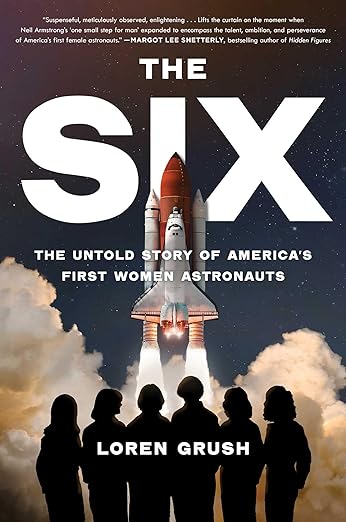
The Untold Story of America’s First Women Astronauts
By: Loren Grush
Published: September 12 2023
Publisher: Scribner
Non-Fiction/Biography

I have been interested in space since I was a child watching space launches on TV. I listened to the audiobook of ENDURANCE back in 2018 where Scott Kelly shares his unexpected journey to becoming an astronaut and chronicles his year on the ISS. It is a fascinating read. Last October, I watched the SpaceX Crew launch into space from a beach in Florida. It was quite amazing to watch knowing there were people heading to space. Even though I was just about 60 miles from the launch site, I was still shocked at how loud it was and how much I could see of the launch. I would definitely do that again.

When NASA first sent astronauts into space, women couldn’t apply. Then in the late 70s, NASA created a campaign for women encouraging them to send in their resumés. Eight thousand women applied and from that group of women, six were chosen to enter the astronaut realm: Sally Ride, Judy Resnik, Anna Fisher, Kathy Sullivan, Shannon Lucid, and Rhea Seddon. Some of these names might be more familiar than others, but all of them eventually made it into space.
Unfortunately, Judy Resnik perished in the Challenger flight in 1986, her second scheduled trip to space. Most people born in the 80s or earlier can say where they were while watching the Challenger take off. I was in my school lunchroom and remember feeling shocked and devastated. I appreciated reading the behind-the-scenes of that particular launch and what happened after. I’m not sure how I didn’t remember hearing that the crew members’ remains were found months later at the bottom of the ocean in the crew compartment. But, this bit of knowledge brought me some peace. The final chapters of this book detail this particular space launch, the reactions of the other five women astronauts, and the mistakes that were discovered during that launch.
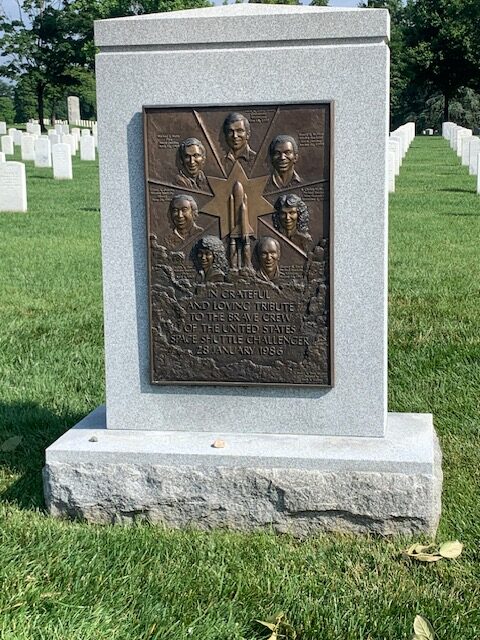
While reading this book, I wanted to keep telling people about it because I think everyone should read it. These six women blazed a trail for women not just in space but in many other disciplines. The Six came to NASA with degrees in medicine, engineering, science, and more. But, were still considered to not be “smart enough” or “capable enough” to be astronauts. They had to be tested to make sure they could handle the rigors of space travel when in most cases, the women actually performed better than the men.
“The Six understood that as the first women, their every move was being scrutinized, more so than the performance of any of their male colleagues. They also realized that if one of them visibly messed up, critics would pounce, using the failure as evidence that women weren’t fit for space.”
Each of the six women’s journeys to space is chronicled in the book, but Sally Ride’s journey gets a bit more coverage due to her being “The Chosen One”. I hadn’t thought about the kind of notoriety Sally Ride had to deal with by being the first American woman in space. Even in the early 80s, I was shocked at how scrupulous and idiotic the paparazzi and media were. Some of their questions regarding Sally in space were appalling and incredibly disrespectful.
Loren Grush’s meticulous research, personal stories, and knowledge of NASA made this an amazing read for me. If you enjoy learning about fascinating women in history, want to learn more about space travel, or just want an enjoyable reading experience, this book is for you. If you’d like a fun book flight to pair with this book, LESSONS IN CHEMISTRY would make for a great reading experience due to the similarities of women trying to get ahead in the world of science.
Loren Grush is a reporter for Bloomberg News specializing in all things space. Previously, she was a senior science reporter for the technology news website The Verge and hosted the online show Space Craft, which took her across the country to explore what it takes to train for space. The daughter of two NASA engineers, Grush grew up surrounded by astronauts and Space Shuttles. She has also been published in The New York Times , Popular Science , and Nautilus magazine, and has appeared on several TV networks as an expert commentator. Be sure to visit her website at LorenGrush.com for more information and lots of cool space videos.
To purchase a copy of THE SIX, click the photo below:

Other posts you might like:
Quick Lit: Mini-Reviews of Some Recent Reads – August Edition
Children’s Book Review: To the Moon and Back By Buzz Aldrin – Books as Gifts
Book Review: The Martian By Andy Weir
Product Review: Mercury 100 Piece Puzzle from Chronicle Kids
Thanks to the publisher for sending a copy of this book for the purpose of this review. This review is my honest opinion. If you choose to make a purchase through the above links, I may receive a small commission without you having to pay a cent more for your purchase.
Posted Under Anna Fisher , biography , Book Review , Judy Resnik , Kathy Sullivan , Loren Grush , Rhea Seddon , Sally Ride , Shannon Lucid , space
Leave a Comment Cancel Reply
- Member Login
- Library Patron Login
SUBSCRIBE TO OUR
FREE NEWSLETTERS
Search: Title Author Article Search String:
The Six : Book summary and reviews of The Six by Laura Thompson
Summary | Reviews | More Information | More Books
The Lives of the Mitford Sisters
by Laura Thompson
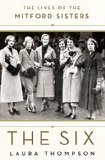
Critics' Opinion:
Readers' rating:
Published Sep 2016 480 pages Genre: Biography/Memoir Publication Information
Rate this book
About this book
Book summary.
An enthralling biography of six glamorous daughters of the British aristocracy in the early 20th century, whose lives take different directions, all rife with scandal, controversy, and tragedy.
The eldest was a razor-sharp novelist of upper-class manners; the second was loved by John Betjeman; the third was a fascist who married Oswald Mosley; the fourth idolized Hitler and shot herself in the head when Britain declared war on Germany; the fifth was a member of the American Communist Party; the sixth became Duchess of Devonshire. They were the Mitford sisters: Nancy, Pamela, Diana, Unity, Jessica, and Deborah. Born into country-house privilege in the early years of the 20th century, they became prominent as "bright young things" in the high society of interwar London. Then, as the shadows crept over 1930s Europe, the stark - and very public - differences in their outlooks came to symbolize the political polarities of a dangerous decade. The intertwined stories of their stylish and scandalous lives - recounted in masterly fashion by Laura Thompson - hold up a revelatory mirror to upper-class English life before and after WWII.
- "Beyond the Book" articles
- Free books to read and review (US only)
- Find books by time period, setting & theme
- Read-alike suggestions by book and author
- Book club discussions
- and much more!
- Just $45 for 12 months or $15 for 3 months.
- More about membership!
Media Reviews
Reader reviews.
"Starred Review. Thompson has fallen under the spell of the breathtakingly beautiful (as she repeatedly insists), seductive Diana, but otherwise, her cleareyed view of the sisters' strengths and foibles makes this gossipy story a delight." - Kirkus "Non-British readers may take longer to understand the sisters' lasting appeal, but Thompson successfully shows how this group of six captured the zeitgeist by being utterly committed and completely "shame-free." B&w photos." - Publishers Weekly "I was enthralled and charmed by this group biography of all six Mitford sisters, which tells the intertwined stories of their stylish scandalous lives in a fresh and admirably concise way - and with a striking contemporary sensibility too." - Bookseller, Editor's Choice (UK) "Engaging...Thompson's is an astute, highly readable and well assembled book, and she writes with particular intelligence about the sisters' self-mythologising and their ongoing hold on the public imagination." - The Observer "Thompson is marvellous at mapping and explicating the webs or skeins of sibling rivalry [in this] gripping and appalling family saga." - The Times (UK) "The first book to consider 'the whole six-pack' in the post-Mitford age. And what a remarkable story it is...Thompson retells the story with great style and illuminating detail." - The Independent
...6 more reader reviews
Author Information
Laura thompson.
Laura Thompson was educated at Simmons College; at Boston University in Paris, where she received a master's degree in International Relations; and at INSEAD. She is an active member of the Foreign Press Association and also a member of the board of the Pen and Brush in New York. She has lived in the United States and Europe and has travelled worldwide.
More Author Information
More Recommendations
Readers also browsed . . ..
- After the Miracle by Max Wallace
- Bitter Crop by Paul Alexander
- Waiting to Be Arrested at Night by Tahir Hamut Izgil
- Pure Wit by Francesca Peacock
- Fatherland by Burkhard Bilger
- Wifedom by Anna Funder
- It. Goes. So. Fast. by Mary Louise Kelly
- The Wide Wide Sea by Hampton Sides
- Orphan Bachelors by Fae Myenne Ng
- What the Taliban Told Me by Ian Fritz
more biography/memoir...
Support BookBrowse
Join our inner reading circle, go ad-free and get way more!
Find out more

BookBrowse Book Club
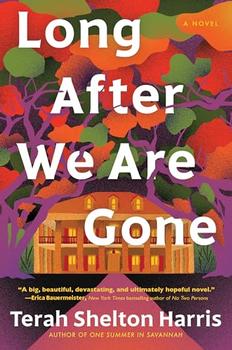
Members Recommend
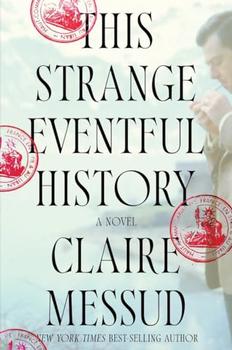
This Strange Eventful History by Claire Messud
An immersive, masterful story of a family born on the wrong side of history.
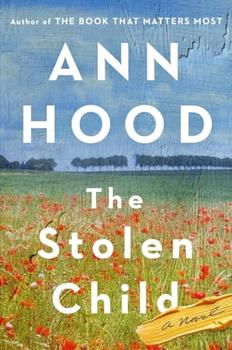
The Stolen Child by Ann Hood
An unlikely duo ventures through France and Italy to solve the mystery of a child’s fate.
Win This Book
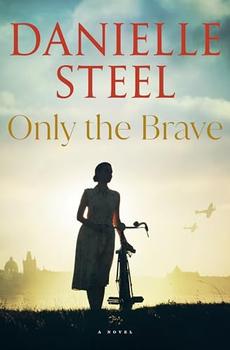
Only the Brave by Danielle Steel
A powerful, sweeping historical novel about a courageous woman in World War II Germany.
Solve this clue:
and be entered to win..
Your guide to exceptional books
BookBrowse seeks out and recommends the best in contemporary fiction and nonfiction—books that not only engage and entertain but also deepen our understanding of ourselves and the world around us.
Subscribe to receive some of our best reviews, "beyond the book" articles, book club info and giveaways by email.

Book Review: The Six: The Untold Story of America’s First Women Astronauts
- September 12, 2023
- Book Reviews , Book Reviews: Non-Fiction
- No Comments
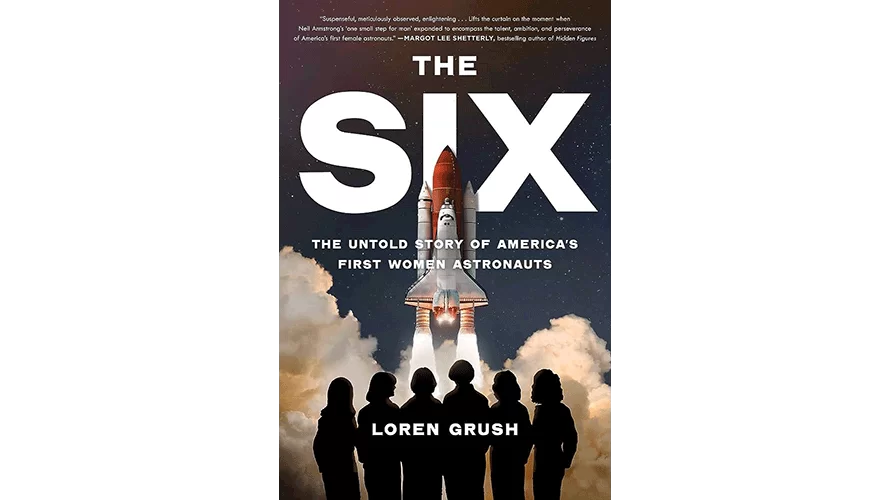
Category: Nonfiction Reviewed by: Douglas G. Adler Title: The Six: The Untold Story of America’s First Women Astronauts Author: Loren Grush Format: Hardcover/Kindle Pages: 432 Publisher: Scribner Date: September 2023 Retail Price: $32.50/$16.99 ISBN: 978-1982172800 Find this book
On January 16, 1978 NASA announced the composition of the 8th group of astronauts selected to fly the then-untested space shuttle. The group of 35 people included the first Jewish astronauts, the first African-American astronauts, the first Asian-American astronauts, and the first American female astronauts.
The Six: The Untold Story of America’s First Women Astronauts focuses on the six women in Group 8—Anna Fisher, Shannon Lucid, Judy Resnick, Sally Ride, Margaret Rhea Seddon, and Kathryn Sullivan. All six were a new breed of astronaut, so-called “Mission Specialists.” Mission Specialists often had a scientific or engineering background and were primarily used to conduct experiments, launch satellites, and perform spacewalks on orbit (as opposed to the Commanders and Pilots who actually flew the space shuttle to and from orbit).
The book unfolds in a very straightforward manner and largely follows the playbook of most astronaut biographies and autobiographies when telling the story of “The Six”: early life, interest in the space program, application, the triumph of acceptance into the astronaut corps, the interminable wait to fly an actual mission, and the satisfaction of finally launching into space on one or more shuttle flights.
Sally Ride, the first American woman in space, is the centerpiece of the book. Her story dominates and permeates the story of the other five women. Ride attained worldwide fame after her flight aboard Challenger during STS-7 in 1983. Ride was preceded into space by Soviet female Cosmonauts Valentina Tereshkova (who flew aboard Vostok 6 in 1963) and Svetlana Savitskaya (who flew on the Soyuz T-7/T-5 mission in 1982 and again, after Ride’s first flight, on the Soyuz T-12 mission in 1984). The other members of “The Six” were variously jealous of Ride for going first and relieved that they did not have to live in the glare of the media spotlight Ride was subjected to. Grush portrays Ride in a complex manner: she was an inspiration to millions worldwide, but she was uncomfortable with the intense media scrutiny she was subjected to and spent much of her time at NASA living a double life, as she was gay but had not revealed this to the public. Ride was still married to fellow Group 8 astronaut Steve Hawley, who she subsequently divorced, while she was romantically involved with another woman.
Beyond Ride, Resnick is the astronaut who received the most attention from Grush in “The Six” (although all of the women are highlighted at various times, the focus of the book shifts back and forth between them). The story of Resnick, doomed to fly aboard the ill-fated Challenger mission STS-51-L (which took the life of all 7 astronauts aboard) is particularly gripping, is presented in a great deal of detail, and makes for some of the most interesting reading in the book. Resnick is presented in an extremely positive light, and her death shook “The Six” to their core, driving home that flying into space will always carry extreme risk.
Readers looking for tales of the women triumphing over flagrant male chauvinism will likely be disappointed: NASA was, and remains, an extremely progressive organization. All six of the women flew in space. “The Six” were welcomed into the astronaut ranks and all of them had extremely impressive careers at the space agency and afterwards. NASA worked extremely hard to accommodate and create opportunities for “The Six” and the other women astronauts that followed.
Although the book purports to tell the “untold story” of “The Six,” much of the material in the book has been covered in prior works. The New Guys: The Historic Class of Astronauts That Broke Barriers and Changed the Face of Space Travel by Meredith Bagby (2022), Sally Ride by Lynn Sherr (2014), and Before Lift-off: The Making of a Space Shuttle Crew by Henry Cooper (1987), among others, contain significant overlap with The Six .
Unlike many astronaut bios, The Six is light on technical details and NASA jargon. Whereas Before Lift-off does a deep dive on Sally Ride’s mastery of the shuttle’s Remote Manipulator Arm, the technical details of learning to operate the shuttle’s systems, and Ride’s long period of simulator training in preparation for STS-7, The Six is by and large content to focus on the personal stories of the female astronauts and how their time at NASA affected them and their families. Interestingly, the book largely ends with the death of Resnick and how the loss of the Challenger affected the other members of “The Six,” whereas The New Guys devotes extensive space to the accident, its aftermath, the recovery of the astronaut’s remains, and how the rest of Group 8, men and women, were able to move forward in the wake of the tragedy.
Overall The Six makes for an interesting read. These women broke new ground and were an inspiration for people around the globe. The Six also makes it clear that, male or female, being a NASA astronaut is a complex and challenging job that comes with both enormous benefits and unavoidable risks.
© 2023 Douglas G. Adler
NSS index of over 400 book reviews
Contributors to the NSS Blog are unpaid volunteers. Unless specifically labeled an NSS position or press release, all blog posts represent the views of the author and not of NSS, even if written by an NSS officer.
Leave a Comment Cancel reply
Save my name, email, and website in this browser for the next time I comment.
Be the first to know when new articles are posted! Yes, add me to your mailing list

Don't Miss a Beat!
Be the first to know when new articles are posted!
Check your inbox or spam folder to confirm your subscription.
Follow Us On Social Media
Join the greatest adventure, book review.
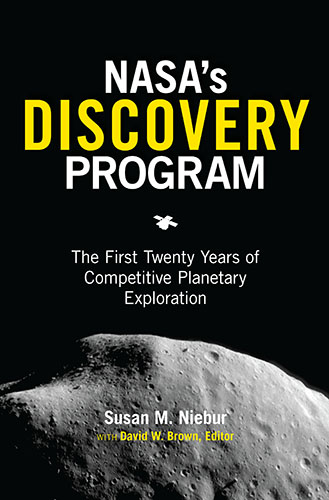
Book Review: NASA’s Discovery Program
Category: Nonfiction Reviewed by: Casey Suire Title: NASA’s Discovery Program: The First Twenty Years of Competitive Planetary Exploration Author: Susan

Book Review: The Music of Space
Category: Nonfiction Reviewed by: Peter Spasov Title: The Music of Space: Scoring the Cosmos in Film and Television Author: Chris

Book Review: Alien Earths
Category: Nonfiction Reviewed by: Peter Spasov Title: Alien Earths: The New Science of Planet Hunting in the Cosmos Author: Lisa

Children’s Book Review: An Unlikely Astronaut
Category: Children’s Books Reviewed by: Susan Raizer Title: An Unlikely Astronaut Author: Susan Kilrain with Francis French Illustrator: Becky Hardy
ISDC 2024: A NEW SPACE AGE
Featured blog.
- November 28, 2023
- One Comment
- Featured , NSS Press Releases
The NSS 2024 Martine Rothblatt Space Settlement in Our Lifetime Competition Now Open

- November 24, 2023
- Book Reviews , Book Reviews: Non-Fiction , Featured
Book Review: Nuclear Rockets

- November 20, 2023
- Commercial Space , Featured , NSS Press Releases
NSS Congratulates SpaceX on Second Test Flight of Starship

- November 2, 2023
- Featured , National Space Society
Ad Astra Wins MARCOM Gold Award for Creativity in Communication

- November 1, 2023
- Education , Event , Featured , National Space Society
NSS at Partnership in Education Event at Kennedy Space Center

- October 3, 2023
- Featured , National Space Society , Space Law , Space Policy
New NSS Paper on Sharing the Benefits of Space

- September 5, 2023
- Event , Featured , National Space Society
NSS “Live in a Healthy Space” Student Design Competition

- May 21, 2023
- Commercial Space , Featured , NASA , NSS Press Releases
NSS Congratulates NASA and Blue Origin for Lunar Lander Selection

We are people from around the world dedicated to the creation of a spacefaring civilization. We are an independent nonprofit nonpartisan educational membership organization.
- Mission & History
- Member Benefits
- NSS Leadership
- Alliances & Affiliates
- Corporate Documents
- Press Releases
- Thought Leadership
- Contact NSS
Publications
- ad Astra Magazine
- ad Astra Downlink
- Space Settlement Roadmap
- Space Settlement Journal
- Policy Documents
- Book Reviews
- NSS Space Library
Get involved
- Why Space Matters?
- Why Donate?
- Inside NSS (Member Sign-in)
- Be a Space Advocate
- Career Center
- Local Chapters
- Space Biz Plan
- Space Ambassadors
- Social Networks
- Defending Earth
- Space Solar Power
- Asteroid Resources
- Orbital Debris
- Space Settlement
Events & Contests
- International Space Development Conference (ISDC)
- Space Settlement Summit
- NSS Space Forums
- Spun Debates
- O’Neill Space Space Settlement Contest
- Space Settlement Design Competition
- March Storm / Fall Fury
- Space Biz Plan Contest
- NSS Event Calendar
- SpaceX Collier Trophy

quick Links
- AdAstra Magazine

Keep in Touch
'Daisy Jones & The Six' Surpassed #ReadWithMC Reviewers' Expectations
The audiobook version is apparently even better.

If it wasn't the brilliantly written oral history, it was the raw, compelling storylines that made readers fall in love with Taylor Jenkins Reid's Daisy Jones & The Six —a novel about the rise and fall of a fictional '70s rock band, and all of the sex, drugs, music, laughter, sadness, pain, and love in-between.
Inspired by iconic '60s and '70s bands like The Rolling Stones and Fleetwood Mac, Jenkins Reid told MarieClaire.com she did about six weeks of straight research, which allowed her to paint a full picture of the lives of rock and roll artists from both an internal and external perspective. It's also pretty hard to believe that she didn't know much about music beforehand, yet she crafted lyrics to songs that made #ReadWithMC reviewers disappointed they couldn't listen to them when they put the book down. (There's great news, though: Reese Witherspoon is turning the book into a limited TV series , so you'll actually get to see the songs come to life.)
Here, the #ReadWithMC community shares exactly what made Jenkins Reid's Daisy Jones & The Six so great, and why you may even want to listen to the audiobook version first. Find out how you can have your review featured on the site for next month's Marie Claire book club pick ( The Sun Is Also a Star by Nicola Yoon), here .
"Formatted as an oral history, this is the story of how Daisy Jones came to join The Six to create one of the biggest rock records of the 70s—and how (and why) the band quickly fell apart after. The author lets each character tell their side of this tumultuous story, then pieces the interviews together into one fluid narrative that reveals exactly what happened that pulled this band apart at the seams. Wow—what a book. I was absolutely captivated, my mindset swinging from wanting to read slowly to savor the story to reading as fast as I could. Set in one of the greatest eras of rock and roll, this story had everything you’d want: drugs, sex, ambition, ego, and talent.
Although the story itself was great, the way the author chose to tell the story—as an oral history—is how this novel grabbed me. By letting the characters tell the story themselves, the author built incredible depth to these characters. You were in their heads, understanding their every move and motivation. This book is everywhere right now, so I understand if you’re wondering if it’s overrated, but I’ll tell you this: You won’t regret picking this one up. It's a truly refreshing spin on fiction, and definitely worth reading." —@elissa.reads
A post shared by Elissa (@elissa.reads) A photo posted by on

"Just finished Daisy Jones & The Six by @tjenkinsreid and immediately wanted to start it all over again, it was that good. Not only is it a captivating, entertaining story of sex, drugs, and rock and roll presented in a unique format, but it also deals with Important Themes like trust and self-worth in subtle and thought-provoking ways. Ten out of 10 recommend. Can’t wait for the series." —@danismcnally
[instagram align='center' id='BwE5e_Mgv3C']https://www.instagram.com/p/BwE5e_Mgv3C[/instagram]
Stay In The Know
Marie Claire email subscribers get intel on fashion and beauty trends, hot-off-the-press celebrity news, and more. Sign up here.
"This might be my fave read by @tjenkinsreid. It honestly has everything you’d want in a book: originality, girl power, and a number of characters you’re bound to fall for." —@friendswithabook
A post shared by Marie Claire (@marieclairemag) A photo posted by on
"Jumping into the fictional world of Daisy Jones & The Six was an emotional roller coaster I was not prepared for. Written to portray the good times and bad times of a band trying to make it big in the late '60s/early '70s, I was immediately drawn to this title. The form of this book is one that I particularly enjoy. This story is presented like reading the transcript to a documentary; a written interview. The dialogue jumps between all seven members of the band, their management team, and from time to time people of great importance to them, in a Behind the Music- style production. As I’m sure many other readers will tell you, it is difficult not to draw thoughts of Fleetwood Mac. As a fan, the fictional spin on an iconic band such as Fleetwood Mac really worked for me. Some of the best rock and roll of all time was recorded during this time period—it was the perfect era to use in the creation of a book such as this—and it was evident that this period was very well-researched. Taylor did a wonderful job of capturing the nostalgia and feel of this time setting perfectly. From the avocation of 'peace and love,' the subtlety in the inclusion of the second wave of feminism to the sex drugs and rock and roll that was the '70s rock era.
Given that this book read like the oral history of the band, there are many times you will feel as if these are real people and not just a creation from the mind of its author. It will become impossible not to impulsively search 'Daisy Jones & The Six' on Spotify or Google because these characters, this story, was written to feel so real. I don’t know if I’m alone in this, but whenever offered a glimpse of the lyrics—with one or two lines of a verse—I wanted so badly to read each song in its entirety. When this was exactly what Taylor offered her reader in the final pages, I could not have loved that inclusion more. In the end, Billy Dunne and Daisy Jones had my heart singing, soaring, and crushed. This is my first read by Taylor Jenkins Reid, and to say I am obsessed with this story is an understatement. This book would definitely translate well to television and I’m excited to see how it is adapted and who is cast. Thanks, Reese Witherspoon! Needless to say, this book has everything I love wrapped up in its pages. I could not recommend it more and it’s definitely one of those books that you don’t want to miss. Period." — Julie on Goodreads
"This book absolutely crushed me. ❤️❤️❤️ Jenkins Reid is a genius and I couldn’t put this book down. I’m now on my third day of a serious Stevie Nicks binge." —@dontcallmeagnes
"Just finished the book—it was great! I wanted to hear the music so bad!!!" —@mzeliz
"Taylor Jenkins Reid always writes the most unique and brilliant stories. Daisy Jones & The Six is a book unlike any I’ve read before. This story follows many characters, but is primarily about Daisy Jones and Billy Dunne, the two lead singers and songwriters of the band. The band came together in the '70s and that is the decade the story takes place. You get the perspectives of many characters, but thankfully, it was easy to follow. This story felt like it was real, in fact, I questioned several times if this was a real band/story. This one captured me from the start and held my attention all the way through. I felt conflicted about a lot of things, but the ending…the last few lines…they gave me goosebumps. I listened to the audio book of Daisy Jones & The Six and I can’t recommend the audio format enough. There was an array of narrators voicing the characters and they did a magnificent job. The book was written in an interview style, and I honestly don’t think I would have enjoyed reading the e-book/paperback nearly as much. I’m so glad I did the audio. If you love rockstar books, stories that are real, raw, and a bit angsty, be sure to grab this. And do yourself a favor and do the audio if you can. It’s wonderful!" — Christy B. on Goodreads
"Loved this book! I got sucked in from the start and couldn't put it down. I really felt the energy, and actually started crying when I read the ending on my subway ride home. Jenkins Reid crafts such vivid characters, and it's definitely no small feat to weave together so many storylines in the as-told-to format. I can't wait to see the on-screen adaptation!" —@morgan.mcmullen
"This was so good! I love Taylor Jenkins Reid’s book so much! Her writing is incredible. She has a beautiful way of making her characters very real and believable. I loved the format. I’ve always been a huge nerd for Behind the Music specials and E! True Hollywood Stories , and while reading this book I kind of felt like I was watching one of those, so I loved it!
I liked that this book not only focused on the romantic relationships, but also on the powerful friendships between these women. There was so many strong messages for women about empowerment, standing up for yourself, and about women supporting each other. Even though this book is fiction, I felt at the end of reading it that this could’ve been a true story because of how amazing this story was put together. I absolutely loved it and I highly recommend it!" —@bookishamberlynn
A post shared by Bookstagram (@bookishamberlynn) A photo posted by on
"OBSESSED!!!! Can’t wait to hear the songs come off the pages in the Amazon show." —@annelisita21
"I listened to the audiobook and I gotta say, Taylor Jenkins Reid has knocked it out of the park again. I LOVED THIS SO MUCH. This audiobook was one of the best audiobooks I've ever listened to and I am SO GLAD that I decided to take in the story that way. It was narrated by a full cast and I just about died when my girl Judy Greer started speaking in my ear as the voice of Karen Karen. Seriously y'all, so fucking good.
I WILL SAY, the reason I'm giving this a 4 and not a 5 is because the book as a whole ends a little unspectacularly. There's so much build up and tension throughout the course of the book and the ending just did not live up to what came before it. I do still HIGHLY recommend you check it out though, and 100 percent recommend the audiobook. What a wild ride." — Chelsea on Goodreads
"This book was ADDICTIVE. Please Kill Me is a book that meant a lot to me and to see Daisy Jones through the same narrative style was so fascinating and felt so real. I was genuinely sad I couldn’t go play some of their music every time I put it down, it felt like being in their fully realized world." —@hella_drella
"Reading 'Daisy Jones and The Six' was like having an all-access pass to hang backstage with the hottest rock band in the world!" —@forthereading
Reading "Daisy Jones and The Six" was like having an all access pass to hang backstage with the hottest rock band in the world! #ReadWIthMC https://t.co/5bkVTkx5VT April 25, 2019
"What a highly entertaining read! From the pen of the talented @tjenkinsreid comes the story of the rise and fall of a band in the 70s. It is written in the form of interview transcripts and through this unique style, the views and memories of all the different members are captured perfectly....albeit differently. It’s pure 70s sex, drugs, ‘n’ rock and roll...with a nice twist in the end!
Hats off to TJR for actually writing complete songs and including them in the back of the book!! There were many quotable parts for me in the book:
'Men often think they deserve a sticker for treating women like people.'
'We became a democracy instead of a autocracy. And democracy sounds like a great idea, but bands aren’t countries.'
'It’s just rock 'n' roll. None of this really matters.'
'But music is never about music. If it was, we’d be writing songs about guitars. But we don’t. We write songs about women.'
'Passion is fire...Water is how we keep alive...I picked water.'"
A post shared by Juani 🌟 | She/Her (@jkslibrary) A photo posted by on
"This is a breeeeezy zip of a book. It’s written in a gossipy, fragmented way, using snippets of Behind the Music -style interviews to chronicle the rise and fall, the relationships, adventures, and misadventures of a fictional '70s rock band called Daisy Jones & The Six, which is apparently modeled after Fleetwood Mac. Jenkins Reid's frothy trip down imaginary rock and roll lane is shaped as a book-in-the-making, allowing former band members, rock critics, producers, friends, and lovers the opportunity to supply or respond to other participants’ admissions concerning all the steamy behind-the-scenes dirt that is part and parcel of fame’s mythos—the resentments, the sex, the drinking, the drugs, the creative differences, the posturing; the whole roiling emotional toll of the rock and roll lifestyle. There’s a special emphasis on the burdens and perceptions and scrutiny that comes with being a woman in the industry, and in a band numbering seven people, the juggling of egos, and managing status and contribution and consensus becomes a real issue along with the compromises one makes for commercial viability, being an artist vs. being a star, personal/artistic sacrifices made for the good of the band—and things get, as the kids say, complicated. Although Jenkins Reid has to construct these personas using only what is essentially a series of monologues, she does it well and consistently, and there’s some fun to be had in observing who among the characters are forthright, who politely declines to answer, or whose memories differ or contradict the memories of others. This makes for a little subtext of a story about how memories change over time, how situations are interpreted based on a participant’s perspective or the filter of hindsight, or how misunderstandings, when allowed to go unchallenged, often snowball into bigger problems than they ought to have. In a related theme, it’s interesting to see how this phenomenon transcends the interpersonal level and is carried out into the legend of the band—how lyrics are interpreted, misinterpreted, how rumors grow around them, how situations are inflated for a juicier tale, and how the press operates as kingmakers, creating or perpetuating the aura of stardom on the slimmest of pretexts. It’s a fun, light summertime book sprinkled with great lines. The best one? Karen was the kind of person who had more talent in her finger than most people have in their whole body… And don’t you forget it." — Karen on Goodreads
"Even though I was exhausted, I stayed up late last night finishing this book. Everything that can be said about this book has already been said, so here are my personal takeaways:
Recommended for fans of: Bohemian Rhapsody (the movie—but also the song!), Intervention , praying every night for the reunion of The Civil Wars, 'Rehab' by Amy Winehouse." —@shellsnbooks
Missed out on our April pick? Starting May 1, we'll be reading Nicola Yoon's YA novel The Sun Is Also a Star. Before you watch the movie starring Yara Shahidi and Charles Melton, out May 17, learn more about the book and read an exclusive interview with the author here .
For more stories like this, including celebrity news, beauty and fashion advice, savvy political commentary, and fascinating features, sign up for the Marie Claire newsletter.
SUBSCRIBE HERE
RELATED STORIES

How to Join Marie Claire's Virtual Book Club

Taylor Jenkins Reid Talks 'Daisy Jones & The Six'
Rachel Epstein is a writer, editor, and content strategist based in New York City. Most recently, she was the Managing Editor at Coveteur, where she oversaw the site’s day-to-day editorial operations. Previously, she was an editor at Marie Claire , where she wrote and edited culture, politics, and lifestyle stories ranging from op-eds to profiles to ambitious packages. She also launched and managed the site’s virtual book club, #ReadWithMC. Offline, she’s likely watching a Heat game or finding a new coffee shop.

She's the second celebrity to wear custom Gap this month.
By Halie LeSavage Published 20 May 24

Some of our biggest stars are polyglots!
By Katherine J. Igoe Published 20 May 24

She originally wore them 20 years ago.
By Julia Marzovilla Published 20 May 24

The fictional boy band from the new rom-com was inspired by BTS, *NSYNC, and One Direction.
By Quinci LeGardye Published 3 May 24

Including one that just might fill the Riverdale-shaped hole in your heart.
By Andrea Park Published 18 September 23

Cue up Mike Reno and Ann Wilson’s “Almost Paradise."
By Andrea Park Last updated 20 September 23

The Indiana native is the first senior citizen to join Bachelor Nation.
By Andrea Park Last updated 27 September 23

Here's everything we know on the upcoming episodes.
By Andrea Park Last updated 4 December 23

All the dance numbers! All the show tunes!
By Amanda Mitchell Last updated 13 May 24

Netflix owes us answers after that ending.
By Zoe Guy Last updated 13 December 22

The forthcoming book from 'We Are Not Like Them' authors Jo Piazza and Christine Pride asks the question: Who gets to make the choice to be a mom?
By Danielle McNally Published 28 November 22
- Contact Future's experts
- Advertise Online
- Terms and conditions
- Privacy policy
- Cookies policy
Marie Claire is part of Future plc, an international media group and leading digital publisher. Visit our corporate site . © Future US, Inc. Full 7th Floor, 130 West 42nd Street, New York, NY 10036.
- ADMIN AREA MY BOOKSHELF MY DASHBOARD MY PROFILE SIGN OUT SIGN IN
THE LIVES OF THE MITFORD SISTERS
by Laura Thompson ‧ RELEASE DATE: Sept. 6, 2016
Thompson has fallen under the spell of the breathtakingly beautiful (as she repeatedly insists), seductive Diana, but...
A fresh look at six outrageous sisters.
There has been no lack of attention to the notorious Mitford sisters, including biographies of Unity Valkyrie Mitford, who, scandalously, adored Hitler; Diana, who married the outspoken fascist Sir Oswald Mosley; and writer Nancy, the subject of Life in a Cold Climate (2003) by Somerset Maugham Award winner Thompson herself ( A Different Class of Murder: The Story of Lord Lucan , 2014, etc.). Added to those are family memoirs, collections of letters, and a previous group biography, Mary S. Lovell’s The Mitford Girls (2001). Yet for readers yearning for another take on the glamorous sisters’ “posh past,” Thompson’s smart, jaunty, and wittily entertaining book will amply fill their desire. Steeped in Mitford lore and mythmaking, the book offers sharply drawn portraits of each woman, teases out the complexities of their fraught, competitive relationships with one another, and sets their lives within the context of a radically changing world. “These girls are prize exhibits in a Museum of Englishness,” admits the author, but she shows how they were much more. Born between 1904 and 1920, the sisters grew up imbibing the etiquette of debutante balls and the personal consequences of global upheaval; their friends were the fey Bright Young Things, “sublimely clever aesthetes”; their enemies were legion. “Snobbery, shallowness, stupidity, adultery, unpalatability—the Mitfords were accused of all these things and rode out every criticism,” Thompson writes admiringly. They fervently believed they were exceptional, even Jessica, who rebelled vehemently against the family’s politics. Unity never married, and others chose startlingly unsuitable mates: Diana left her adoring, hugely wealthy, but unfortunately dull husband for the rake Mosley; and Pamela married opinionated, philandering bores; Jessica ran off with a communist, with whom she lived in poverty. Deborah, though, made a more suitable match, with an eminent duke who owned assorted castles.
Pub Date: Sept. 6, 2016
ISBN: 978-1-250-09953-2
Page Count: 480
Publisher: St. Martin's
Review Posted Online: June 21, 2016
Kirkus Reviews Issue: July 1, 2016
BIOGRAPHY & MEMOIR | ENTERTAINMENT, SPORTS & CELEBRITY | GENERAL BIOGRAPHY & MEMOIR
Share your opinion of this book
More by Laura Thompson

BOOK REVIEW
by Laura Thompson

by Elie Wiesel & translated by Marion Wiesel ‧ RELEASE DATE: Jan. 16, 2006
The author's youthfulness helps to assure the inevitable comparison with the Anne Frank diary although over and above the...
Elie Wiesel spent his early years in a small Transylvanian town as one of four children.
He was the only one of the family to survive what Francois Maurois, in his introduction, calls the "human holocaust" of the persecution of the Jews, which began with the restrictions, the singularization of the yellow star, the enclosure within the ghetto, and went on to the mass deportations to the ovens of Auschwitz and Buchenwald. There are unforgettable and horrifying scenes here in this spare and sombre memoir of this experience of the hanging of a child, of his first farewell with his father who leaves him an inheritance of a knife and a spoon, and of his last goodbye at Buchenwald his father's corpse is already cold let alone the long months of survival under unconscionable conditions.
Pub Date: Jan. 16, 2006
ISBN: 0374500010
Page Count: 120
Publisher: Hill & Wang
Review Posted Online: Oct. 7, 2011
Kirkus Reviews Issue: Jan. 15, 2006
BIOGRAPHY & MEMOIR | HOLOCAUST | HISTORY | GENERAL BIOGRAPHY & MEMOIR | GENERAL HISTORY
More by Elie Wiesel
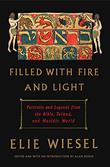
by Elie Wiesel ; edited by Alan Rosen
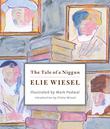
by Elie Wiesel ; illustrated by Mark Podwal

by Elie Wiesel ; translated by Marion Wiesel

THE PURSUIT OF HAPPYNESS
From mean streets to wall street.
by Chris Gardner with Quincy Troupe ‧ RELEASE DATE: June 1, 2006
Well-told and admonitory.
Young-rags-to-mature-riches memoir by broker and motivational speaker Gardner.
Born and raised in the Milwaukee ghetto, the author pulled himself up from considerable disadvantage. He was fatherless, and his adored mother wasn’t always around; once, as a child, he spied her at a family funeral accompanied by a prison guard. When beautiful, evanescent Moms was there, Chris also had to deal with Freddie “I ain’t your goddamn daddy!” Triplett, one of the meanest stepfathers in recent literature. Chris did “the dozens” with the homies, boosted a bit and in the course of youthful adventure was raped. His heroes were Miles Davis, James Brown and Muhammad Ali. Meanwhile, at the behest of Moms, he developed a fondness for reading. He joined the Navy and became a medic (preparing badass Marines for proctology), and a proficient lab technician. Moving up in San Francisco, married and then divorced, he sold medical supplies. He was recruited as a trainee at Dean Witter just around the time he became a homeless single father. All his belongings in a shopping cart, Gardner sometimes slept with his young son at the office (apparently undiscovered by the night cleaning crew). The two also frequently bedded down in a public restroom. After Gardner’s talents were finally appreciated by the firm of Bear Stearns, his American Dream became real. He got the cool duds, hot car and fine ladies so coveted from afar back in the day. He even had a meeting with Nelson Mandela. Through it all, he remained a prideful parent. His own no-daddy blues are gone now.
Pub Date: June 1, 2006
ISBN: 0-06-074486-3
Page Count: 320
Publisher: Amistad/HarperCollins
Review Posted Online: May 19, 2010
Kirkus Reviews Issue: March 15, 2006
GENERAL BIOGRAPHY & MEMOIR | BIOGRAPHY & MEMOIR | BUSINESS
- Discover Books Fiction Thriller & Suspense Mystery & Detective Romance Science Fiction & Fantasy Nonfiction Biography & Memoir Teens & Young Adult Children's
- News & Features Bestsellers Book Lists Profiles Perspectives Awards Seen & Heard Book to Screen Kirkus TV videos In the News
- Kirkus Prize Winners & Finalists About the Kirkus Prize Kirkus Prize Judges
- Magazine Current Issue All Issues Manage My Subscription Subscribe
- Writers’ Center Hire a Professional Book Editor Get Your Book Reviewed Advertise Your Book Launch a Pro Connect Author Page Learn About The Book Industry
- More Kirkus Diversity Collections Kirkus Pro Connect My Account/Login
- About Kirkus History Our Team Contest FAQ Press Center Info For Publishers
- Privacy Policy
- Terms & Conditions
- Reprints, Permission & Excerpting Policy
© Copyright 2024 Kirkus Media LLC. All Rights Reserved.
Popular in this Genre
Hey there, book lover.
We’re glad you found a book that interests you!
Please select an existing bookshelf
Create a new bookshelf.
We can’t wait for you to join Kirkus!
Please sign up to continue.
It’s free and takes less than 10 seconds!
Already have an account? Log in.
Trouble signing in? Retrieve credentials.
Almost there!
- Industry Professional
Welcome Back!
Sign in using your Kirkus account
Contact us: 1-800-316-9361 or email [email protected].
Don’t fret. We’ll find you.
Magazine Subscribers ( How to Find Your Reader Number )
If You’ve Purchased Author Services
Don’t have an account yet? Sign Up.
Book Review: ‘Ascent to Power’ studies how Harry Truman overcame lack of preparation in transition

This cover image released by Dutton shows "Ascent to Power: How Truman Emerged from Roosevelt's Shadow and Remade the World" by David L. Roll. (Dutton via AP)[ASSOCIATED PRESS]
LITTLE ROCK, Ark. (AP) — Harry Truman’s ascension to the presidency after Franklin Roosevelt’s death was a rocky one, and it came at a pivotal time in the nation’s history.
Once a senator who complained that the 32nd president treated him like “an office boy,” Truman left the White House in 1953 as one of the most accomplished presidents. Those events are the focus of David L. Roll’s “Ascent to Power: How Truman Emerged from Roosevelt’s Shadow and Remade the World.”
Roll’s book is an essential read for those who want to understand a presidency that, as he puts it, “spawned the most consequential and productive events since the Civil War.”
The book begins during the final months of Roosevelt’s time in office, chronicling his failing health and decision to choose Truman as his running mate in the 1944 election. Through meticulous research, Roll illustrates how Truman overcame a lack of preparation to lead the country through the end of World War II and shepherd in a host of domestic and foreign policy reforms.
The liveliest moments of the book come, fittingly, from the time Truman emerges from under Roosevelt’s shadow during his bid for his first full term in the 1948 election.
Roll portrays Truman as a master at populist campaigning who was able to close the gap with Thomas Dewey by focusing on workers, veterans, farmers and Black voters. But he also credits figures like adviser Clark Clifford, as Truman ran against the Republican Party’s record in Congress rather than his opponent.
Roll’s meticulous research and ability to balance multiple voices throughout provides readers with an illuminating portrait of Truman’s rise to the presidency and his time in the office.
AP book reviews: https://apnews.com/hub/book-reviews
Copyright 2024 The Associated Press. All rights reserved. This material may not be published, broadcast, rewritten or redistributed without permission.
- Sign up and get a free ebook!
- Don't miss our $0.99 ebook deals!

The Untold Story of America's First Women Astronauts
- Trade Paperback
- Unabridged Audio Download
LIST PRICE $32.50
Buy from Other Retailers
- Amazon logo
- Bookshop logo
Table of Contents
Reading group guide.
- Rave and Reviews
Featured Video
About the book.
Get a FREE ebook by joining our mailing list today! Plus, receive recommendations for your next Book Club read.
About The Author

Loren Grush is a space reporter for Bloomberg, where she covers everything from NASA, human spaceflight, and the booming commercial space industry to distant stars and planets. The daughter of two NASA engineers, she grew up surrounded by space shuttles and rocket scientists—literally. Prior to joining Bloomberg, she was a senior science reporter for The Verge , where she covered space and hosted her own online video series called Space Craft , a show that examined what it takes to send people into the cosmos. Loren has also published stories in Popular Science , The New York Times , Nautilus magazine, Digital Trends , and more.
Product Details
- Publisher: Scribner (September 12, 2023)
- Length: 432 pages
- ISBN13: 9781982172800
Browse Related Books
- Science > Space Science
- Social Science > Women's Studies
- History > United States > 20th Century
Related Articles
- 10 Books to Read If You Adored Lessons in Chemistry - Off the Shelf
- 19 New Fall Releases Adored by Indie Booksellers - Off the Shelf
Raves and Reviews
An Amazon Best History Book of 2023 ?A September 2023 Indie Next Pick “Tales of the space race enshrined in American history too often center on white men and elevate machismo…Science journalist Loren Grush reclaims this place as female…Grush skillfully weaves a story that, at its heart, is about desire: not a nation’s desire to conquer space, but the longing of six women to reach heights that were forbidden to them… Like space travel itself, The Six widens our vision of what it means to belong to ‘the whole family of humankind.’” —New York Times
“A spirited group biography… The Six joins a growing list of books heralding women’s achievements in scientific settings where their presence was unusual or unwelcome. These include Margot Lee Shetterly’s Hidden Figures and Kate Zernike’s The Exceptions , which follows the women scientists who fought for equal opportunity at MIT at the turn of the 21st. It’s hard not to feel awe for these women.” —Wall Street Journal
“Vivid…Grush paints a compelling picture of the rigors faced by these driven and accomplished women….Grush writes optimistically that the growth of the commercial space industry will bring greater opportunities for female astronauts. Whatever happens next, The Six is an important record of their achievements so far.” —The Guardian
“Remarkable...Grush has an important story to tell, and she tells it well. An inspiring story of the first American women to go into space, charting their own course for the horizon.” — Kirkus Reviews
“Engrossing…a well-rounded narrative… The Six highlights the contributions of women in science and the challenges they face.” — Booklist
“[Creates] an intimacy that makes [each astronaut] utterly memorable….Grush makes it thrillingly clear: These six women rose far above such misogyny, smashing our planet’s highest ceilings as they soared.” — BookPage (starred review)
“Suspenseful, meticulously observed, enlightening…Lifts the curtain on the moment when Neil Armstrong’s ‘one small step for man’ expanded to encompass the talent, ambition, and perseverance of America’s first female astronauts.” — Margot Lee Shetterly, #1 New York Times bestselling author of Hidden Figures
“A dazzling look into the lives of the first U.S. women to venture into space….This is a story that had to be told, and Grush has told it brilliantly.” — Ashlee Vance, New York Times bestselling author of Elon Musk: Tesla, Space X, and the Quest for a Fantastic Future
“One of the most important stories to come out of the space age….One can't help but cheer for these women of destiny as their journey unfolds…Superb.” — Homer Hickam, author of the #1 New York Times bestseller Rocket Boys, basis of the film October Sky
“A powerful, gripping, and at times heartbreaking tale of human courage in the face of impossible odds. The Six reminds us of the price that women paid to join men in space—and why these women still matter today.” —Keith O'Brien, New York Times bestselling author of Fly Girls and Paradise Falls
Resources and Downloads
High resolution images.
- Book Cover Image (jpg): The Six Hardcover 9781982172800
Get a FREE ebook by joining our mailing list today!
Plus, receive recommendations and exclusive offers on all of your favorite books and authors from Simon & Schuster.
You may also like: Thriller and Mystery Staff Picks

More to Explore

Limited Time eBook Deals
Check out this month's discounted reads.

Our Summer Reading Recommendations
Red-hot romances, poolside fiction, and blockbuster picks, oh my! Start reading the hottest books of the summer.

This Month's New Releases
From heart-pounding thrillers to poignant memoirs and everything in between, check out what's new this month.
Tell us what you like and we'll recommend books you'll love.
- Election 2024
- Entertainment
- Newsletters
- Photography
- Personal Finance
- AP Investigations
- AP Buyline Personal Finance
- AP Buyline Shopping
- Press Releases
- Israel-Hamas War
- Russia-Ukraine War
- Global elections
- Asia Pacific
- Latin America
- Middle East
- Election Results
- Delegate Tracker
- AP & Elections
- Auto Racing
- 2024 Paris Olympic Games
- Movie reviews
- Book reviews
- Personal finance
- Financial Markets
- Business Highlights
- Financial wellness
- Artificial Intelligence
- Social Media
Book Review: ‘Challenger’ is definitive account of shuttle disaster and missteps that led to tragedy
This cover image released by Avid Reader shows “Challenger: A True Story of Heroism and Disaster on the Edge of Space” by Adam Higginbotham. (Avid Reader via AP)
- Copy Link copied

When the Challenger space shuttle exploded a little over a minute after its launch in 1986, it pierced the dreams of millions about who watched the tragedy unfold live on television. It also eventually exposed the weaknesses of a space program that had been revered by many.
In “Challenger: A True Story of Heroism and Disaster on the Edge of Space,” Adam Higginbotham provides the most definitive account of the explosion that took the lives of the seven-person crew. He also meticulously explores the missteps and negligence that allowed the tragedy to occur.
Bookmarked between two other tragedies that struck NASA — the 1967 Apollo launchpad fire that killed three astronauts and the 2003 Columbia shuttle disaster that killed seven — Higginbotham’s book traces the history of the nation’s shuttle program leading up to the Challenger explosion.
Higginbotham manages to temper his account of the excitement the shuttle program generated — recounting how “everyday life seemed to come to a standstill” during the launch of the Columbia shuttle in 1981 — with the warning signs of technical flaws that were overlooked or outright ignored over the years.
In clear and accessible language, Higginbotham explains the mechanics of the shuttle and its problems without sacrificing any of the pace that carries readers forward. The pace is so brisk that readers will be surprised when they realize the vivid account of the Challenger launch doesn’t occur until well after halfway through the book.
Higginbotham provides just as dramatic of a retelling of the aftermath of the shuttle’s crash, from the search for the wreckage and astronaut remains to the investigation and hearings on the disaster.
The book delivers a compelling, comprehensive history of the disaster that exposed, as Higginbotham writes, how “the nation’s smartest minds had unwittingly sent seven men and women to their deaths.”
AP book reviews: https://apnews.com/hub/book-reviews


- Mystery, Thriller & Suspense
- Thrillers & Suspense

Enjoy fast, free delivery, exclusive deals, and award-winning movies & TV shows with Prime Try Prime and start saving today with fast, free delivery
Amazon Prime includes:
Fast, FREE Delivery is available to Prime members. To join, select "Try Amazon Prime and start saving today with Fast, FREE Delivery" below the Add to Cart button.
- Cardmembers earn 5% Back at Amazon.com with a Prime Credit Card.
- Unlimited Free Two-Day Delivery
- Streaming of thousands of movies and TV shows with limited ads on Prime Video.
- A Kindle book to borrow for free each month - with no due dates
- Listen to over 2 million songs and hundreds of playlists
- Unlimited photo storage with anywhere access
Important: Your credit card will NOT be charged when you start your free trial or if you cancel during the trial period. If you're happy with Amazon Prime, do nothing. At the end of the free trial, your membership will automatically upgrade to a monthly membership.

Buy new: .savingPriceOverride { color:#CC0C39!important; font-weight: 300!important; } .reinventMobileHeaderPrice { font-weight: 400; } #apex_offerDisplay_mobile_feature_div .reinventPriceSavingsPercentageMargin, #apex_offerDisplay_mobile_feature_div .reinventPricePriceToPayMargin { margin-right: 4px; } $15.00 $ 15 . 00 FREE delivery Wednesday, May 29 on orders shipped by Amazon over $35 Ships from: Amazon.com Sold by: Amazon.com
Return this item for free.
Free returns are available for the shipping address you chose. You can return the item for any reason in new and unused condition: no shipping charges
- Go to your orders and start the return
- Select the return method
Save with Used - Very Good .savingPriceOverride { color:#CC0C39!important; font-weight: 300!important; } .reinventMobileHeaderPrice { font-weight: 400; } #apex_offerDisplay_mobile_feature_div .reinventPriceSavingsPercentageMargin, #apex_offerDisplay_mobile_feature_div .reinventPricePriceToPayMargin { margin-right: 4px; } $6.23 $ 6 . 23 $3.99 delivery May 30 - June 5 Ships from: HPB Inc. Sold by: HPB Inc.

Download the free Kindle app and start reading Kindle books instantly on your smartphone, tablet, or computer - no Kindle device required .
Read instantly on your browser with Kindle for Web.
Using your mobile phone camera - scan the code below and download the Kindle app.

Follow the author

Image Unavailable

- To view this video download Flash Player

The Six: A Dark Psychological Thriller Paperback – July 22, 2017
Purchase options and add-ons.
- Print length 432 pages
- Language English
- Publication date July 22, 2017
- Dimensions 6 x 1.08 x 9 inches
- ISBN-10 1548871362
- ISBN-13 978-1548871369
- See all details

Frequently bought together

Similar items that may deliver to you quickly

Get to know this book
What's it about.
Popular highlight
Product details.
- Publisher : CreateSpace Independent Publishing Platform (July 22, 2017)
- Language : English
- Paperback : 432 pages
- ISBN-10 : 1548871362
- ISBN-13 : 978-1548871369
- Item Weight : 1.44 pounds
- Dimensions : 6 x 1.08 x 9 inches
- #2,937 in Kidnapping Thrillers
- #3,917 in Serial Killer Thrillers
- #22,753 in Suspense Thrillers
About the author
Anni taylor.
ANNI TAYLOR lives on The Central Coast, north of Sydney, Australia, with her partner and four boys. Her thriller novels include The Game You Played, The Six, Stranger in the Woods, Poison Orchids and One Last Child. Previously, she was a Features' Writer and Community Manager for Fairfax Media, Australia.
She also writes young adult fiction under the name, ANYA ALLYN.
WEBSITE: annitaylor.me
Customer reviews
Customer Reviews, including Product Star Ratings help customers to learn more about the product and decide whether it is the right product for them.
To calculate the overall star rating and percentage breakdown by star, we don’t use a simple average. Instead, our system considers things like how recent a review is and if the reviewer bought the item on Amazon. It also analyzed reviews to verify trustworthiness.
Reviews with images

- Sort reviews by Top reviews Most recent Top reviews
Top reviews from the United States
There was a problem filtering reviews right now. please try again later..
Top reviews from other countries
- Amazon Newsletter
- About Amazon
- Accessibility
- Sustainability
- Press Center
- Investor Relations
- Amazon Devices
- Amazon Science
- Sell on Amazon
- Sell apps on Amazon
- Supply to Amazon
- Protect & Build Your Brand
- Become an Affiliate
- Become a Delivery Driver
- Start a Package Delivery Business
- Advertise Your Products
- Self-Publish with Us
- Become an Amazon Hub Partner
- › See More Ways to Make Money
- Amazon Visa
- Amazon Store Card
- Amazon Secured Card
- Amazon Business Card
- Shop with Points
- Credit Card Marketplace
- Reload Your Balance
- Amazon Currency Converter
- Your Account
- Your Orders
- Shipping Rates & Policies
- Amazon Prime
- Returns & Replacements
- Manage Your Content and Devices
- Recalls and Product Safety Alerts
- Conditions of Use
- Privacy Notice
- Consumer Health Data Privacy Disclosure
- Your Ads Privacy Choices
Ozempic is the ‘it’ drug. A new book tries to explain what it means.
Johann Hari’s “Magic Pill” chronicles his experience taking semaglutide while simultaneously studying its pros and cons.
It’s hard to overstate how quickly Ozempic and similar drugs have gone mainstream. When I started taking semaglutide in January , I knew only two people who had tried it. Four months later, it feels almost ubiquitous.
Well-timed for this mania, Johann Hari’s “ Magic Pill: The Extraordinary Benefits and Disturbing Risks of the New Weight-Loss Drugs ” aims to help readers clarify whether they should take the plunge. His central contention, that “Ozempic and its successors look set to become one of the iconic and defining drugs of our time, on a par with the contraceptive pill and Prozac,” seems almost unarguable . But his conclusion on whether this is a good thing or a bad thing is mixed: “If you want a book uncritically championing these drugs, or alternatively a book damning them, I am afraid I can’t give it to you.”
What he does give is an easy-to-read summary of just what the subtitle suggests — benefits and risks — though there are a couple of points about which I think he’s wrong. And the amount of digressive fluff — an account of his nightmarish stint at an Austrian weight-loss spa, a smarmy chapter on Japanese food culture — implies this could have easily been a long magazine article rather than a short book.
Scottish-born journalist Hari, now based in London, used to be a fat guy. He opens his story by confessing, “Some people say the main reason they survived the pandemic was the vaccine; for me, it was Uber Eats.” He assumed he wasn’t alone, but then he went to a post-quarantine Hollywood party where everyone was not just slim but gaunt. What was going on here? He quickly found his answer. From there, Hari chronicles his snap decision to start Ozempic while simultaneously studying the pros and cons of semaglutide.
Before continuing with a summary of Hari’s admittedly entertaining anecdotes, it feels important to mention that, while he may not be especially well-known on this side of the pond, in 2011 he was suspended from his columnist job at the Independent after admitting to plagiarism and making malicious edits to the Wikipedia pages of other journalists. You would think this history would make him meticulous in his research, but he has already come under fire for claiming in the book that food critic Jay Rayner lost pleasure in food after taking Ozempic . When Rayner responded on social media that he had never taken the drug, Hari apologized, saying that he had “confused an article by Jay Rayner in the Guardian with an article by Leila Latif in the same paper.”
Hari’s reputation, as well as his sloppiness, casts a shadow over even the most poignant portions of the book, such as the grief he experienced after his friend Hannah, his favorite partner for epic pigouts and crude banter, died at 46 after she choked while eating and went into cardiac arrest.
Hari, 5-foot-8, 203 pounds, deeply addicted to fried chicken — he was given a Christmas card by the employees of his neighborhood KFC addressed “to our best customer” (and it wasn’t even the chicken outlet he patronized most often!) — decided the time had come to take his shot.
In his telling, things went well for him; though he experienced nausea and lightheadedness, the product worked as advertised. After three months, his neighbor’s “hot gardener” asked for his phone number. At which point he went into a bit of soul-searching about whether he was taking these drugs because he cared about his health — or was it really because he was worried about how he looked?
All I can say to that is: duh. As he reports a few chapters later, when Esquire magazine polled 1,000 women, asking if they would rather gain 150 pounds or get hit by a truck, more than half said they would prefer the truck.
This was not the first or the last of the “duh” moments. Though the book is pleasant and informative, it consistently makes aha moments out of familiar concepts. “Satiety, or the feeling of no longer wanting more, is not a word we use much in everyday life, but I kept hearing it in two contexts. The first was the science of factory-assembled food — because this food, it turns out, is designed to undermine satiety. The second was in the science of the new weight-loss drugs — because they are designed to boost satiety. I only slowly began to trace the connections between them.”
Some of us will be ahead of him there.
Meanwhile, Hari flatly states that “for the medication to work, you have to take it forever.” Like hypertension or diabetes, he explains, obesity is a condition that requires permanent medical management. And most people who go off the drugs regain much of the weight they lost within a year.
However, some doctors believe that if you can maintain your goal weight for six months, your body will lower its “set point” by about 10 percent, and you can wean yourself off the drug without fearing that all your losses will be reversed. In my case, I weighed 142 when I started, and I hit my goal of 126 after about three months. Since then, I’ve been on a low-maintenance dose, and I’m hoping that staying on it for another three months will give me a set point of 128. Call me a cockeyed optimist, but I do think the jury is still out here.
Hari also is critical of the off-brand semaglutide compounds available online and at med spas, labeling them “ Breaking Bad Ozempic” and suggesting that they could be fatal. But the book doesn’t lay out enough evidence to warrant such a baldly negative conclusion.
Which leads us to one last thing. I was tickled to read his claim that “there’s already been a decline in the value of the stocks of the doughnut company Krispy Kreme, which analysts directly attributed to the growing popularity of Ozempic.” So I looked that up in the endnotes and found nothing more.
I’m all for a good comeback, but perhaps Hari still has a little way to go.
Marion Winik has been detailing her Ozempic journey in a series at BaltimoreFishbowl.com .
The Extraordinary Benefits and Disturbing Risks of the New Weight-Loss Drugs
By Johann Hari
Crown. 320 pp. $30
We are a participant in the Amazon Services LLC Associates Program, an affiliate advertising program designed to provide a means for us to earn fees by linking to Amazon.com and affiliated sites.

Advertisement
More from the Review
Subscribe to our Newsletter
Best of The New York Review, plus books, events, and other items of interest
June 6, 2024
Current Issue
Is Israel Committing Genocide?
June 6, 2024 issue
Gilles Peress/Magnum Photos
Items of clothing at a morgue, Tuzla, Bosnia, 1996
Submit a letter:
Email us [email protected]
Like most of my colleagues in the international human rights movement, I use the term “genocide” sparingly. During my fifteen-year tenure at Human Rights Watch ( HRW ), which I cofounded in 1978, I applied the term to only one of the many great crimes that we monitored: Saddam Hussein’s slaughter of the Iraqi Kurds in 1988.
The Kurds had suffered severe abuses under Saddam’s dictatorship, and during the Iran–Iraq War of 1980–1988 they rebelled. In response Saddam used chemical weapons against them, as he had against Iranian forces. A particularly large attack took place in March 1988 against the Kurdish city of Halabja, killing about five thousand people. Then, over the following six months, Saddam’s forces rounded up Kurdish men and boys from northern Iraq and bused them to a desert area where bulldozers had dug trenches in the sand. Thousands of victims were forced into the trenches, machine-gunned, and buried.
At HRW , it took us more than two years to discover the desert killings and burials. One person who provided crucial information was a twelve-year-old boy named Taymour Abdullah Ahmad who had climbed out of a trench with a bullet in his back. A Bedouin family found him as he crossed the desert, and they nursed him to health. Two years later Ahmad made his way back to the Kurdish region of Iraq, where we were able to get his story. We subsequently found a few other survivors.

Susan Meiselas/Magnum Photos
Taymour Abdullah Ahmad, the boy who provided Human Rights Watch with information about violence committed by Saddam Hussein’s forces, displaying his bullet wounds, Kurdistan, Iraq, 1991
Iraqi forces had destroyed a dozen towns and as many as four thousand villages, looted property and farm animals on a vast scale, and imprisoned tens of thousands of women, children, and elderly people under dire conditions. Iraqi intelligence had been trained by East Germany’s Stasi, and the regime kept detailed records of its actions throughout the war. In a few cities, Kurdish forces overran Iraqi security offices and captured many of these records. At HRW , we were able to have fourteen tons of them flown to the United States, and we translated them from Arabic to obtain a full picture of the crimes against the Kurds that we came to call a genocide.
In The Destruction of the European Jews (1961), the historian Raul Hilberg argued that the elimination of a people is “a step-by-step operation.” First comes defining the group, then expropriating its resources, then concentrating its members in one place, and finally annihilating them. Saddam’s campaign against the Kurds, we determined, fit Hilberg’s paradigm to perfection. It clearly met the definition of genocide under international law: “Intent to destroy, in whole or in part, a national, ethnical, racial or religious group, as such.” We were never able to arrange a trial of Saddam’s government in the International Court of Justice ( ICJ ), but the Iraqi interim government used some of our evidence when it tried Saddam and other leading officials, including his cousin Ali Hassan al-Majid (known as Chemical Ali), and executed them.
I stepped down as executive director of HRW in 1993, a year before the slaughter of the Tutsi in Rwanda. The organization called that, too, a genocide. In this century it has only used the term to characterize the persecution and slaughter of the Rohingya in Myanmar.
In late December, when South Africa brought to the ICJ its accusation that Israel was committing genocide in Gaza, I did not join some of my colleagues in the international human rights movement in their support of the charge. I was deeply distressed by Israel’s bombing campaign, particularly by its frequent use in densely populated areas of 500- and 2,000-pound bombs—supplied by the United States—that were killing large numbers of civilian noncombatants. (On May 8 Biden halted the shipment of such bombs to prevent their use in Rafah.) Such weapons are clearly inappropriate for use in those circumstances. Yet I was not convinced that this constituted genocide.
I thought then, and continue to believe, that Israel had a right to retaliate against Hamas for the murderous rampage it carried out on October 7. I also thought that Israel’s retaliation could include an attempt to incapacitate Hamas so that it could not launch such an attack again. To recognize this right to retaliate is not to mitigate Israel’s culpability for the indiscriminate use of tactics and weapons that have caused disproportionate harm to civilians, but I believe that Hamas shares responsibility for many of Israel’s war crimes. Hamas’s leaders knew, when they planned the attack, that Israel had the most right-wing government in its history, at immense cost to the civilian population of Gaza.
Hamas’s operatives do not wear uniforms, and they have no visible military bases. Hamas has embedded itself in the civilian population of Gaza, and its extensive network of tunnels provides its combatants the ability to move around quickly. Even if Israel’s bombers were intent on minimizing harm to civilians, they would have had difficulty doing so in their effort to destroy Hamas.
And yet, even believing this, I am now persuaded that Israel is engaged in genocide against Palestinians in Gaza. What has changed my mind is its sustained policy of obstructing the movement of humanitarian assistance into the territory. *
As early as October 9 top Israeli officials declared that they intended to block the delivery of food, water, and electricity, which is essential for purifying water and cooking. Defense Minister Yoav Gallant’s words have become infamous: “I have ordered a complete siege on the Gaza Strip. There will be no electricity, no food, no fuel, everything is closed. We are fighting human animals and we act accordingly.” The statement conveyed the view that has seemed to guide Israel’s approach throughout the conflict: that Gazans are collectively complicit for Hamas’s crimes on October 7.
Since then Israel has restricted the number of vehicles allowed to enter Gaza, reduced the number of entry points, and conducted time-consuming and onerous inspections; destroyed farms and greenhouses; limited the delivery of fuel needed for the transport of food and water within the enclave; killed more than two hundred Palestinian aid workers, many of them employees of the United Nations Relief and Works Agency ( UNRWA ), the principal aid provider in the blockaded territory before October 7; and persuaded many donors, including the United States, to stop funding UNRWA by claiming that a dozen of the agency’s 13,000 employees in Gaza were involved in the October 7 attack or have other connections to Hamas. (An investigation by former French foreign minister Catherine Colonna, released on April 22, concluded that Israel had provided no evidence to support its allegations and that UNRWA is “irreplaceable and indispensable.”) The air strikes on April 1 that destroyed all three vehicles in a World Central Kitchen convoy, killing six international aid workers and a Palestinian driver and translator, seemed a continuation of these policies. Israel’s explanation that this was the result of a “misidentification” has aroused skepticism. As a result, other humanitarian groups may be deterred from providing aid.
The cumulative effect of these measures is that many Palestinians—especially young children—are starving. In April the Gaza Health Ministry reported that twenty-eight children have died of starvation. That number could multiply many times over if reports on food insecurity are valid. On April 10 USAID Administrator Samantha Power answered “yes” when asked, at a House Foreign Affairs Committee hearing, whether famine is already occurring in Gaza. On May 3 Cindy McCain, executive director of the World Food Program, stated on NBC News that there is a “full-blown famine in northern Gaza.” Deaths from famine are only a fraction of the total fatalities reported by the ministry. As of this writing, 34,904 Palestinians have been killed, including at least 14,685 children and 9,670 women, and another 78,514 have been injured. Though some Israelis dispute these figures, they are in truth probably an undercount because they do not include those buried under the rubble.
Many of those who survive malnutrition will suffer long-term consequences such as increased susceptibility to illnesses and psychological damage. In Gaza’s north, UNICEF found in February that malnutrition among children under five had nearly doubled in a month. The obstruction of humanitarian assistance is unlikely to affect Hamas combatants directly. Even in conditions of famine, men with guns find a way to get fed. It is those who bear no responsibility for Hamas’s crimes who are suffering most.
All access to the territory is controlled by the Israel Defense Forces, which have denied entry to Israeli and Palestinian human rights organizations and to international organizations like HRW and Amnesty International. Limiting the ability of these organizations to gather information and make detailed reports on the conflict hardly insulates Israel from criticism for its abuses. That is because international observers judge the conflict in Gaza on the basis of principles and assumptions that the human rights movement has helped to establish.
Today the human rights movement includes thousands of organizations around the world; among international citizen movements, only the environmental movement might be better developed. Amnesty International and HRW , neither of which seeks or accepts government funding, have offices and hundreds of research staff members in many countries. HRW ’s staff numbers over five hundred; Amnesty’s staff is much larger. Over the past few decades these organizations have created a broad awareness that there is a body of law, known as International Humanitarian Law ( IHL ), that represents civilized values and regulates the conduct of combatants. It forbids such practices as indiscriminate bombing and requires military forces to try to protect civilians from harm. It condemns attacks that intentionally or indiscriminately destroy civilian dwellings and such structures as schools, hospitals, and places of religious worship. And it prohibits measures that are intended to starve the civilian population or to deny them other necessities of life.
Some principles of International Humanitarian Law have ancient roots. Herodotus tells us that Sparta, in violation of the customs of war, murdered heralds sent by the Persian king Xerxes to conduct negotiations. Sparta afterward sent to Persia two noblemen who were meant to pay for that crime with their lives. Xerxes refused to kill them; this, he said, would release the Spartans from their guilt for violating the customs of war. The Chinese military strategist Sun Tzu called on armies to treat captives well. Saint Augustine argued that the goal of war is not more war, but peace. Therefore conducting war in a manner that contributes to the restoration of peace is essential.
In the age of chivalry, from approximately the twelfth to the fifteenth century, specific rules were developed for those honored as knights. Courts such as the Parlement of Paris tried cases involving violations. In the seventeenth century the Dutch scholar Hugo Grotius codified the laws of war. A century later Jean-Jacques Rousseau wrote that once men have laid down their arms and submitted, “they cease to be enemies…and revert to the condition of men, pure and simple, over whose lives no one can any longer exercise a rightful claim.”
Contemporary IHL is substantially based on the work of two men who made major contributions in the 1860s: Henri Dunant, a young Swiss businessman who founded what would become the International Committee of the Red Cross ( ICRC ), and Francis Lieber, a German-born professor of law at Columbia who drafted a detailed code that Secretary of War Edwin Stanton promulgated to regulate the conduct of Union forces during the Civil War. Lieber’s code included a provision stating that when Union soldiers occupied enemy territory,
all wanton violence committed against persons in the invaded country, all destruction of property not commanded by the authorized officer, all robbery, all pillage or sacking, even after taking a place by main force, all rape, wounding, maiming, or killing of such inhabitants, are prohibited under the penalty of death, or such other severe punishment as may seem adequate for the gravity of the offense.
Lieber and Stanton’s efforts were aided by the invention of the telegraph, which made it possible for newspapers to employ war correspondents who reported on the conduct of military forces as battles were underway. When those forces engaged in cruel practices, that information was widely disseminated.
Another significant development took place at the end of the nineteenth century, when Tsar Nicholas II of Russia convened a peace conference at the Hague with the intent of placing limits on military expenditures and armaments. In that respect the conference failed. But it succeeded in adopting the first international treaty that placed limits on the conduct of war. This included the adoption of the Martens Clause, named for the Russian diplomat who proposed it:
Until a more complete code of the laws of war is issued, the high contracting Parties think it right to declare that in cases not included in the Regulations adopted by them, populations and belligerents remain under the protection and empire of the principles of international laws, as they result from the usage established between civilized nations, from the laws of humanity, and the requirements of the public conscience.
The Martens Clause gave rise to the concept of crimes against humanity, under which Nazi leaders were prosecuted at Nuremberg and Japanese military leaders were prosecuted at Tokyo after World War II.
The contemporary human rights movement began with a focus on political persecution. In 1898 the French lawyer and politician Ludovic Trarieux, motivated by the controversy over the trial in which Captain Alfred Dreyfus was convicted of spying for the Germans, launched the Ligue des Droits de l’Homme. The Ligue’s early work included efforts to protect indigenous peoples in French colonies against ethnic persecution and other abuses. In 1922 it helped found the Fédération Internationale des Ligues des Droits de l’Homme ( FIDH ), which united sections of that organization in several European countries. It was dangerous work. Giacomo Matteotti, a leading antifascist political figure and a leader of FIDH ’s Italian section, was murdered by the Fascist secret police in 1924. Carl von Ossietzky, a leader of its German section who won the 1935 Nobel Peace Prize for exposing German rearmament in violation of the Versailles Treaty, was imprisoned by the Nazis and died in 1938 of tuberculosis, which he contracted in prison. Victor Basch, the president of FIDH in France, was murdered during World War II by a fascist paramilitary organization.
A few members of the FIDH escaped France after the German invasion and made their way to the United States. They contacted Roger Baldwin, the longtime director of the American Civil Liberties Union, and joined him in establishing the International League for Human Rights, which began operating during the war years and advocated for the United Nations to incorporate a commitment to protect human rights in its charter. Another organization, the Geneva-based International Commission of Jurists, which promotes the independence of judges and lawyers, was founded in 1952; it is still active today.
The work of the ICRC , a Swiss organization that is independent of national Red Cross societies, led to the adoption of the Geneva Conventions of 1929, which were important during World War II in protecting prisoners of war of countries that had ratified them. In 1949 the ICRC organized the adoption of a revised set of Geneva Conventions, which identified “grave breaches” that should be prosecuted and also provided significant protections against abuses in internal armed conflicts.
Additional important protections for civilians were incorporated in two important Protocols to the Geneva Conventions adopted in 1977, one dealing with international armed conflicts and the other with non-international armed conflicts. The Protocols outline many of the rules that the Israel Defense Forces have been accused of violating in Gaza, including a prohibition on indiscriminate bombing and the use of starvation as a weapon of war.
In 1961, after the British lawyer Peter Benenson published an article titled “The Forgotten Prisoners” in the British newspaper The Observer , an item that was subsequently reprinted all over the world and called for the release of all people held for peaceful expression of their beliefs, Amnesty International was established. From the start it set out to enlist members and establish sections in many countries. At first it strictly limited itself to freeing people it designated as “prisoners of conscience.” But it gradually expanded its mandate, adding the issue of torture and many other human rights concerns. The organization was also intent on remaining neutral in the cold war, insisting that its activists should “adopt” equal numbers of prisoners of conscience on opposing sides of the East–West divide, as well as in nonaligned countries.
In 1978, along with Robert Bernstein and Orville Schell, I founded the organization that became Human Rights Watch. It began as Helsinki Watch, which promoted human rights in the thirty-five countries of Europe and North America that had adopted the 1975 Helsinki Accords. These were the first international agreements to respect human rights that the Soviet Union and other communist countries joined in signing. Rights activists in Moscow and other Soviet bloc countries formed organizations to monitor compliance with them. When the Soviet Union started imprisoning those activists, we decided to form an organization to help secure their release and to extend the effort to obtain compliance with the human rights provisions of the Helsinki Accords.
As the chair and CEO of Random House, Bernstein was the publisher of some of the activists in those Soviet bloc countries, such as the physicist and Nobel Peace Prize laureate Andrei Sakharov, and so was affected by the Soviet Union’s crackdown. Schell was a prominent lawyer who had chaired the New York City Bar Association and had taken part in efforts to protect the rights of lawyers. As I had served as executive director of the ACLU , my participation signaled that we were also concerned with rights in the United States. After I became executive director in 1981, we added sections dealing with rights in the Americas, Asia, Africa, and the Middle East. Once we acquired the capacity to promote rights worldwide, we renamed the organization Human Rights Watch in 1988.
Before the 1980s the principal effort to promote compliance with International Humanitarian Law consisted of attempts by the ICRC to persuade military commanders and top government officials to conduct military operations in accordance with its principles. The ICRC did not publicize its efforts, in large part because it prized its ability to obtain access to prisoners of war and other security detainees so as to provide them with protection. The organization believed it would lose such access if it publicized its interactions with military officials, and detainees would suffer.
Human Rights Watch made the decision to try to complement the confidential work of the ICRC by engaging in publicized efforts to obtain compliance with the provisions of IHL in circumstances of armed conflict. Over time other human rights organizations, including Amnesty International, followed suit. These efforts, which reflected the growing strength and capacity of the human rights movement, created public awareness of IHL and helped to establish the context in which a conflict such as the war in Gaza is being judged by concerned members of the public worldwide.
The first significant use of IHL by the human rights movement came in 1981, when the Americas division of Human Rights Watch decided, in accordance with the provisions of the Geneva Conventions and Protocols, to assess the conduct of the armed forces engaged in the civil war in El Salvador that had begun two years before. During the war, which lasted until 1992, about 75,000 people died, the great majority in killings by death squads made up of military men, in aerial bombardments by the Salvadoran Air Force of rural areas where peasants were suspected of providing food and shelter to left-wing guerrillas, and in massacres carried out by the country’s military in villages suspected of harboring guerrillas. Up to that point, the human rights movement had been guided by international law largely based on UN-sponsored treaties that were intended to give legal force to the provisions of the Universal Declaration of Human Rights, which was adopted by the UN in 1948. Those treaties addressed such matters as race discrimination, the rights of women, and the rights of refugees, but they did not address the issues that arise during armed conflicts.
It was the war in Bosnia, which began in 1992, that made large parts of the human rights movement focus more closely on International Humanitarian Law. Bosnian Serb forces, which launched the war with the backing of the government of Serbian president Slobodan Milošević, announced explicitly that their purpose was “ethnic cleansing.” They conducted massacres in towns with large Muslim populations. They besieged Sarajevo, killing thousands of its residents by shelling and sniping from the surrounding hills and by depriving the city’s population of water, food, and other necessities. And the Serb military set up detention camps in which many inmates died after suffering from ill treatment, starvation, and sexual assault.
As the director of HRW , I proposed the establishment of an International Criminal Tribunal to deal with these crimes. There had been no such body since the Nuremberg and Tokyo tribunals in the immediate aftermath of World War II, as the onset of the cold war had made it impossible for the UN Security Council to agree on forming any. But by 1992 the Soviet Union had dissolved, and my call for a tribunal coincided with revelations in the press about the worst abuses of the Bosnian Serb detention camps. Many others took up the call, including Madeleine Albright, the US ambassador to the UN, and Robert Badinter, France’s former minister of justice. In May 1993 the Security Council unanimously established the International Criminal Tribunal for the Former Yugoslavia ( ICTY ). It was a triumph for International Humanitarian Law.
The tribunal got off to a slow start. The UN did not have a chief prosecutor for fourteen months, and for a long period the ICTY had only a low-level prison camp guard in custody. Eventually, however, it indicted leading figures from all parties to the wars of the 1990s in the former Yugoslavia, obtained custody of all of them except those who died before they were apprehended, and conducted fair trials. Milošević died while on trial, but the leaders of the Bosnian Serbs responsible for the largest number of atrocious crimes, Radovan Karadžić and General Ratko Mladić, are still serving prison sentences today.
The UN Security Council also created the International Criminal Tribunal for Rwanda ( ICTR ) in 1994 in the months following the genocide in that country. It too got off to a shaky start but righted itself over time. The ICTR conducted fair trials of the figures primarily responsible for many great crimes, including former Rwandan prime minister Jean Kambanda, the first person convicted of genocide by an international tribunal, who remains in prison at this writing. The ICTR has been faulted, however, for not bringing to trial leaders of the Rwandan Patriotic Front, which overthrew the government that conducted the genocide but in the process committed major crimes itself.
In the late 1990s the UN also started forming “hybrid” tribunals with national governments to try officials and revolutionaries who had committed atrocities. The most successful of these, in Sierra Leone, sentenced Charles Taylor, a former president of Liberia, to a fifty-year prison sentence for backing the Revolutionary United Front when it committed atrocities during the civil war in Sierra Leone. In 1998 the success of ad hoc tribunals helped make it possible to convene 148 governments in Rome for the conference that established the International Criminal Court ( ICC ). The treaty they adopted spelled out that the court’s jurisdiction includes war crimes, crimes against humanity (which can take place during times of peace as well as war, and which had not previously been spelled out in an international treaty), and genocide. Now not only could governments bring civil proceedings against other governments in the International Court of Justice; a prosecutor could also bring criminal charges of genocide against individuals at the ICC . One hundred twenty countries supported the treaty, twenty-one abstained, and seven voted to oppose it: Iraq, Libya, China, Qatar, Yemen, Israel, and the United States.
The ICC began operation in 2002. In its early years, all the prosecutions brought before it were in Africa, in part because many African countries had ratified the treaty that established the court, whereas other countries where significant crimes were committed—including China, India, and Russia—had not. The ICC may bring indictments against individuals from such states with the authorization of the UN Security Council, but the Council’s permanent members, including China, Russia, and the United States, can veto any such action. In March 2023 the ICC issued an arrest warrant against President Vladimir Putin of Russia for the war crime of transferring Ukrainian children to Russia. It was able to do so because the crime was committed on the territory of Ukraine, which had accepted the court’s jurisdiction. Any member state of the ICC that Putin visits is obliged to detain him.
In 2015 Palestine ratified the Rome Statute and was accepted as a party to the ICC . This appears to give the ICC jurisdiction to bring indictments both for the crimes Hamas committed on October 7 and for Israel’s crimes in Gaza. If the ICC does issue indictments involving Israel’s conduct in Gaza, I expect that Israel will argue that the court lacks jurisdiction on the grounds that Palestine is not a state and its ratification of the statute is not valid. But even if ICC prosecution does not become a significant factor in the conflict, the court’s existence has contributed to a public awareness that Israel’s and Hamas’s actions should be judged in accordance with contemporary standards of International Humanitarian Law.
If it were feasible, establishment of an ad hoc tribunal along the lines of the International Criminal Tribunal for the Former Yugoslavia or for Rwanda would be a good way to address the crimes committed by Hamas and the crimes committed by Israel since October 7. Such a tribunal could bring indictments against Hamas leaders who were in places like Qatar or Lebanon rather than Gaza on October 7 but who took part in planning and directing the assaults against Israeli civilians. It could also bring charges against Israeli officials who made decisions about the use of weapons and tactics that were designed to kill large numbers of civilians, and about the policies that continue to deny food, water, and other necessities to the civilian population of Gaza.
The chances of securing the creation of such a tribunal by the UN Security Council are, of course, slim. The United States could use its veto power to protect Israel, and Russia, which has prevented the establishment of a tribunal for Syria by the ability to exercise its veto power, is unlikely to be enthusiastic. In the absence of a special tribunal, prosecutions could be initiated by the International Criminal Court, which has been investigating possible war crimes by both Palestinian and Israeli actors since 2021. In recent days rumors have circulated that the ICC is preparing arrest warrants for Israeli prime minister Benjamin Netanyahu, Gallant, and IDF chief of staff Herzi Halevi—a rumor Israeli officials have responded to with indignation—as well as leaders of Hamas. Netanyahu’s assertion that ICC indictments would be antisemitic is indicative of his promiscuous use of antisemitism allegations. In the event that its head of government is charged, Israel is likely to object on the grounds that Palestine is not a state that could authorize such proceedings.
The International Court of Justice is considering the accusation that Israel is committing genocide in Gaza. The ICJ does not have criminal jurisdiction, and it is not able to adjudicate charges involving war crimes or crimes against humanity. Even so, if it ultimately finds that Israel has committed genocide, that will be a resounding defeat for a state that was born in the aftermath of a genocide that many of its founders had barely survived.
I have been engaged in efforts to protect human rights for more than six decades, often in circumstances with exceedingly high stakes. I cannot recall any dispute over rights that aroused greater passions and more debate than that involving the war in Gaza since October 7. There is much about it that is deeply depressing, including how difficult it is to find a way to give victims any hope that justice will eventually be done. I myself hope that the frequent citation of International Humanitarian Law as the standard for judging the conflict will have a positive effect. Whatever else emerges from this war, and whatever judgment comes from the ICJ , it is evident that Israel has done itself as well as its Palestinian victims long-term harm.
Mexico’s Politics of Bitterness
Subscribe to our Newsletters
More by Aryeh Neier
September 21, 2023 issue
April 19, 2018 issue
‘The International Criminal Court in an Effective Global Justice System’
March 8, 2018 issue
Aryeh Neier is President Emeritus of the Open Society Foundations. His most recent book is The International Human Rights Movement: A History . (June 2024)
See Neve Gordon and Muna Haddad, “ The Road to Famine in Gaza ,” nybooks.com, March 30, 2024. ↩
Israel and the Occupied Territories: An Urgent Appeal by the ICRC
May 18, 1989 issue
Amnesty International on Argentina
October 11, 1979 issue
On the Bombing of Aleppo
The world is witnessing a humanitarian catastrophe of historic proportions.
November 10, 2016 issue
To a Western Peace Activist
November 21, 1985 issue
How It Works
August 16, 1979 issue
A Statement By Valery Panov
November 29, 1973 issue
A Letter of Resignation
September 21, 1995 issue
India: The Saints Go to War
October 14, 1965 issue

Subscribe and save 50%!
Get immediate access to the current issue and over 25,000 articles from the archives, plus the NYR App.
Already a subscriber? Sign in

Hemmings Book Reviews: Chevy/GMC Truck Modifications and the Life and Career of Automotive Executive James Nance
Chevy/gmc trucks 1967-1972: how to build and modify.
By Jim Pickering
- CarTech Publishing
- cartechbooks.com/SA528
- 800-551-4754
- ISBN 9781613257470
The 1967-’72 “Action Line” trucks from Chevrolet and GMC moved the pickup game forward with attractive new styling, clever engineering, and a focus on cabin comfort. Two- and four-wheel drive, Fleetside and Stepside bed styles in 6 1/2-foot or 8-foot length–these haulers sold in big numbers and have been collectible for decades. Survivors have become popular subjects for restomodding since their straightforward construction and great parts availability makes them ripe for performance and comfort updates. If you’re buying or already own a C10-K10/1500 half-ton or C20-K20/2500 three-quarter ton truck, and want to make it more everyday usable, you’ll benefit from a copy of the latest entry in CarTech’s Performance How-To series.
Author Jim Pickering walks readers through customizing his own ’67 C20. He offers a historical overview of this era of GM truck and a buyer’s guide, before going step-by-step into how to take them apart, repair rust in the cab and bed, and alter the frame. Chapters include upgrading the front and rear suspensions, modifying brakes with factory or aftermarket parts, building axles, choosing between engine options, and improving cab comforts. The 176-page softcover contains nearly 500 detailed, captioned color photos and offers enthusiasts an excellent overview of what a vintage Chevy and GMC pickup can become with desire, skill, and money.
Spellbinder: The Life Of James J. Nance, Volumes One and Two
By Stuart R. Blond
- The Olde Milford Press
- oldemilfordpress.com
- 203-877-6717
- ISBN 9798475797150 (V. I)
- ISBN 9798484005208 (V. II)
- $32.95 (V. I); $37.95 (V. II)
Through an impressive business career in which he achieved at the highest levels, “professional management man” James J. Nance would make many friends and just as many enemies. This executive received accolades for his achievements at General Motors’ Frigidaire division, the Zenith Radio Corporation, and General Electric before hopping into the driver’s seat at the struggling Packard Motor Car Company. Nance was in charge when Packard car production in the combined Studebaker-Packard Corporation ceased; he’d have a short-lived, ultimately doomed chance for redemption by heading up Mercury-Edsel-Lincoln marketing at the Ford Motor Company.
While Nance may be little remembered by automotive enthusiasts today, he played a key role in the mid-century histories of some of America’s most important automakers. Author Stuart R. Blond deftly tells this man’s life story–before, during, and after Nance’s car-company experience–without undue aggrandizement or criticism. This detailed two-volume biography, illustrated with black-and-white images, is thoroughly researched with source citations, bibliography, index, and more. While they had the potential to be dry, we found they’re engagingly written–genuine page turners. For students of business and curious automotive enthusiasts, these books are an important historical record.


IMAGES
VIDEO
COMMENTS
From the first pages of "The Six: The Untold Story of America's First Women Astronauts," the science journalist Loren Grush reclaims this place as female. "The Six" opens with a quiet scene.
Loren Grush. In the bestselling tradition of Hidden Figures and Code Girls, the remarkable true story of America's first women astronauts—six extraordinary women, each making history going to orbit aboard NASA's Space Shuttle. When NASA sent astronauts to the moon in the 1960s and 1970s the agency excluded women from the corps, arguing ...
The remarkable story of "the first six women astronauts NASA had ever chosen.". Blazing a trail for others to follow is never easy, but the women featured in this book had it tougher than most. Sally Ride, Judy Resnik, Anna Fisher, Kathy Sullivan, Shannon Lucid, and Rhea Seddon were the first American women in space, and they had to fight ...
Like those books, "The Six" illuminates the particular challenges the groundbreakers faced. Ride and her cohort were the focus of unwanted media attention and the butt of demeaning jokes. They ...
The Amazon Book Review Book recommendations, author interviews, editors' picks, and more. Read it now. ... The first shuttle astronaut group, named in 1978, included 35 candidates, among them six female astronauts. This book is the story of Sally Ride, Anna Fisher, Judy Resnik, Kathy Sullivan, Rhea Seddon, and Shannon Lucid. ...
The Six: The Untold Story of America's First Women Astronauts, Loren Grush. New York: Scribner, 2023. Summary: Traces the story of the first six American women astronauts from their selection, through their training and missions, along with the special media attention they received. I grew up with the early space program.
In this eye-opening, untold chapter of history, The Six, acclaimed space reporter Loren Grush ensures that Ride's five female colleagues in NASA's astronaut group 8 also get their due. Each left their mark in a field often hostile to their gender. One, Judy Resnik, lost her life on January 28, 1986, when the space shuttle Challenger ...
Grush skillfully weaves a story that, at its heart, is about desire: not a nation's desire to conquer space, but the longing of six women to reach heights that were forbidden to them ... A six-pronged biography is necessarily sweeping rather than intimate, and it's hard not to want to know more about each woman's motivations and hesitations.
Each of the six women's journeys to space is chronicled in the book, but Sally Ride's journey gets a bit more coverage due to her being "The Chosen One". I hadn't thought about the kind of notoriety Sally Ride had to deal with by being the first American woman in space.
In the bestselling tradition of Hidden Figures and Code Girls, the remarkable true story of America's first women astronauts—six extraordinary women, each making history going to orbit aboard NASA's Space Shuttle. When NASA sent astronauts to the moon in the 1960s and 1970s the agency excluded women from the corps, arguing that only military test pilots—a group then made up exclusively ...
Book Summary. An enthralling biography of six glamorous daughters of the British aristocracy in the early 20th century, whose lives take different directions, all rife with scandal, controversy, and tragedy. The eldest was a razor-sharp novelist of upper-class manners; the second was loved by John Betjeman; the third was a fascist who married ...
The Six: The Untold Story of America's First Women Astronauts focuses on the six women in Group 8—Anna Fisher, Shannon Lucid, Judy Resnick, Sally Ride, Margaret Rhea Seddon, and Kathryn Sullivan. All six were a new breed of astronaut, so-called "Mission Specialists.". Mission Specialists often had a scientific or engineering background ...
Daisy Jones & The Six is a historical fiction book which follows the band, The Six, and Daisy, as they find each other, their spectacular rise, and the end. This is my third Taylor Jenkins Reid book, and I would rank them as follows: 1. The Seven Husbands of Evelyn Hugo 2. Daisy Jones & The Six 3. Malibu Rising.
The Six is a blockbuster of YA science fiction, imaginative and totally immersive. Teen and adult readers will be clamoring for a sequel. If you like I Am Number Four (Lorien Legacies by Pitticus Lore), you'll love The Six. FCC disclaimer: An advance reader copy of this book was given to me for review.
AN INSTANT NEW YORK TIMES BESTSELLER "Riveting. The Six captures all the wayward magnetism and levity that have enchanted countless writers without neglecting the tragic darkness of many of the sisters' life choices and the savage sociopolitical currents that fueled them." - Tina Brown, The New York Times Book Review The eldest was a razor-sharp novelist of upper-class manners; the ...
At the center of the documentary-style novel is the relationship between lead singer Billy Dunne, recovering addict and aspiring family man, and sexy bad girl Daisy Jones, whose soulful voice and complex lyrics turn out to have been the missing ingredient The Six needed. When Daisy joins the band, the group catapults to fame, but not without cost.
published 1 May 2019. If it wasn't the brilliantly written oral history, it was the raw, compelling storylines that made readers fall in love with Taylor Jenkins Reid's Daisy Jones & The Six —a ...
A fresh look at six outrageous sisters. There has been no lack of attention to the notorious Mitford sisters, including biographies of Unity Valkyrie Mitford, who, scandalously, adored Hitler; Diana, who married the outspoken fascist Sir Oswald Mosley; and writer Nancy, the subject of Life in a Cold Climate (2003) by Somerset Maugham Award winner Thompson herself (A Different Class of Murder ...
Anni Taylor. 3.97. 6,877 ratings522 reviews. An alternative cover edition for this ASIN can be found here. 28 people travel to a remote island for a unique program that promises to heal their addictions. But they've headed into their worst danger of their lives. In the grip of a crushing gambling addiction, young mother Evie is desperate for a ...
LITTLE ROCK, Ark. (AP) — Harry Truman's ascension to the presidency after Franklin Roosevelt's death was a rocky one, and it came at a pivotal time in the nation's history. Once a senator ...
"Vivid." —The Guardian * "Engrossing." —Booklist * "Suspenseful, meticulously observed, enlightening." —Margot Lee Shetterly, #1 New York Times bestselling author of Hidden Figures In this account of America's first women astronauts "Grush skillfully weaves a story that, at its heart, is about desire: not a nation's desire to conquer space, but the longing of six women ...
When the Challenger space shuttle exploded a little over a minute after its launch in 1986, it pierced the dreams of millions about who watched the tragedy unfold live on television. It also eventually exposed the weaknesses of a space program that had been revered by many. In "Challenger: A True Story of Heroism and Disaster on the Edge of Space," Adam Higginbotham provides the most ...
Paperback - July 22, 2017. by Anni Taylor (Author) 4.2 7,260 ratings. See all formats and editions. A slow-burn psychological thriller with a dash of Dan Brown adventure and the dark chills of a Dean Koontz horror. Evie is in the grip of a gambling addiction. She's terrified she'll destroy the lives of her husband and two small daughters ...
Books Book Reviews Fiction Nonfiction May books 50 notable fiction books. ... However, some doctors believe that if you can maintain your goal weight for six months, your body will lower its ...
Like most of my colleagues in the international human rights movement, I use the term "genocide" sparingly. During my fifteen-year tenure at Human Rights Watch (HRW), which I cofounded in 1978, I applied the term to only one of the many great crimes that we monitored: Saddam Hussein's slaughter of the Iraqi Kurds in 1988.The Kurds had suffered severe abuses under Saddam's dictatorship ...
Reina Mori, a naturalist, who can intuit the language of life itself. Parisa Kamali, a telepath who can traverse the depths of the subconscious, navigating worlds inside the human mind. Callum Nova, an empath easily mistaken for a manipulative illusionist, who can influence the intimate workings of a person's inner self.
The 1967-'72 "Action Line" trucks from Chevrolet and GMC moved the pickup game forward with attractive new styling, clever engineering, and a focus on cabin comfort. Two- and four-wheel ...